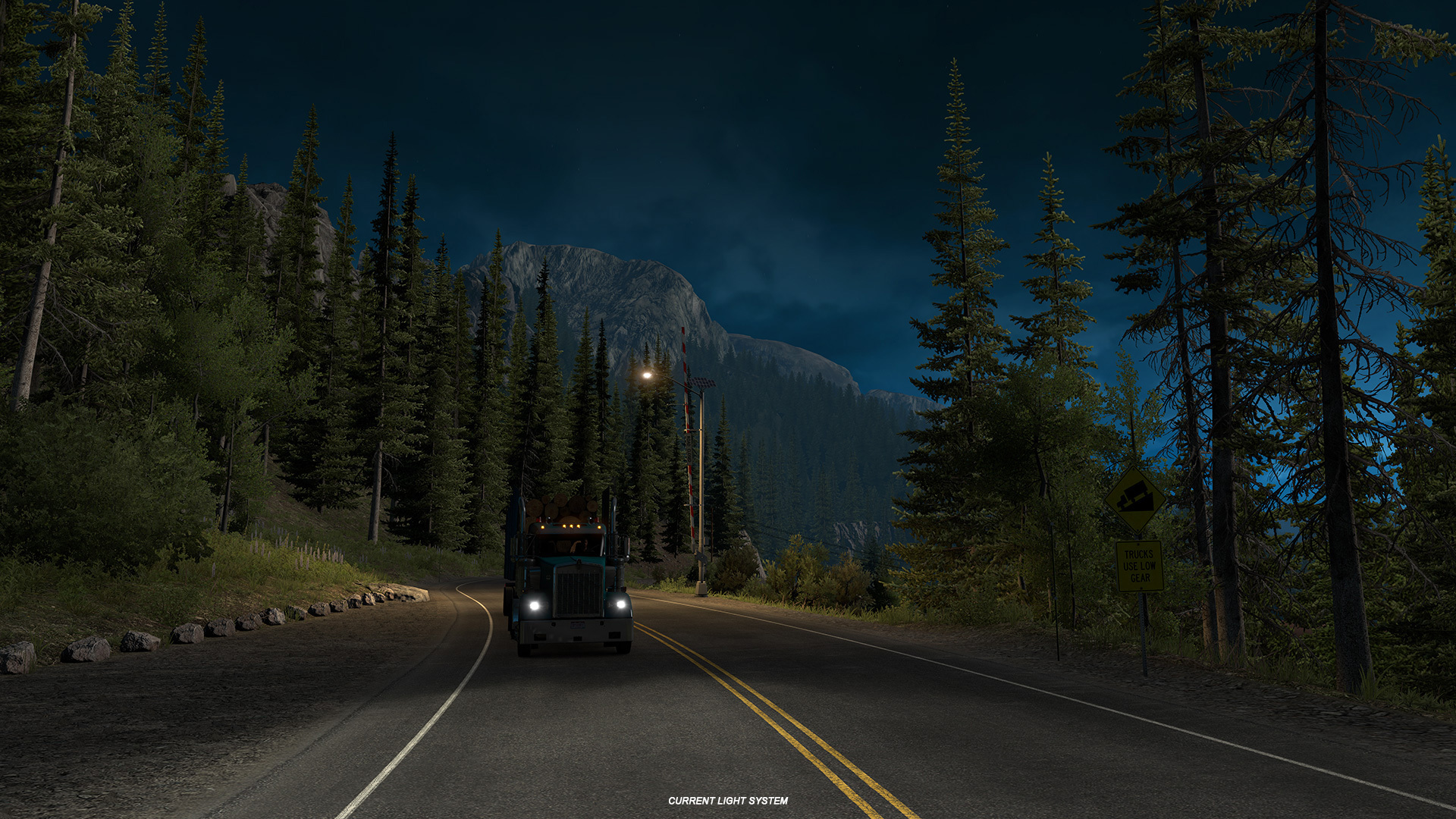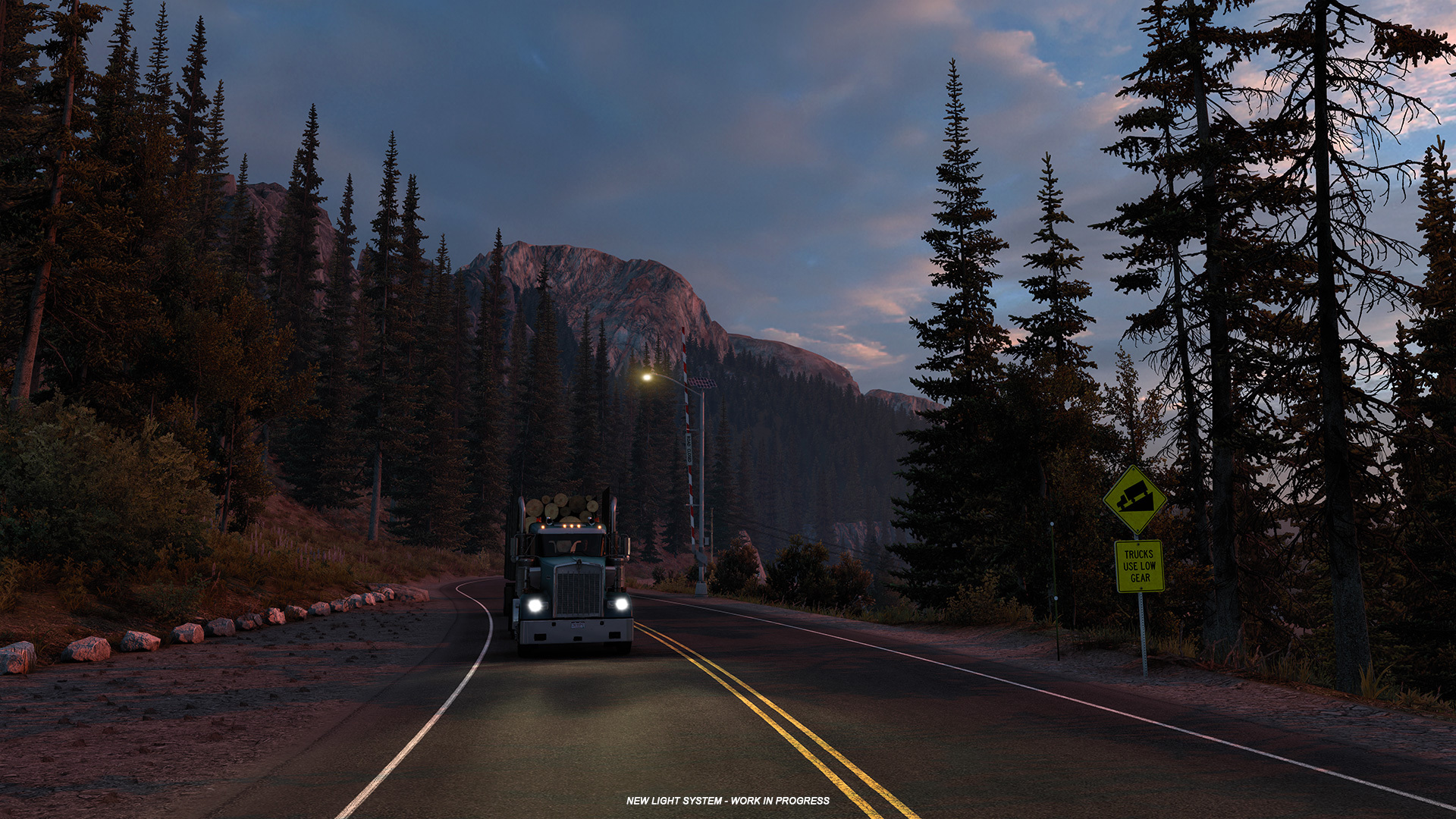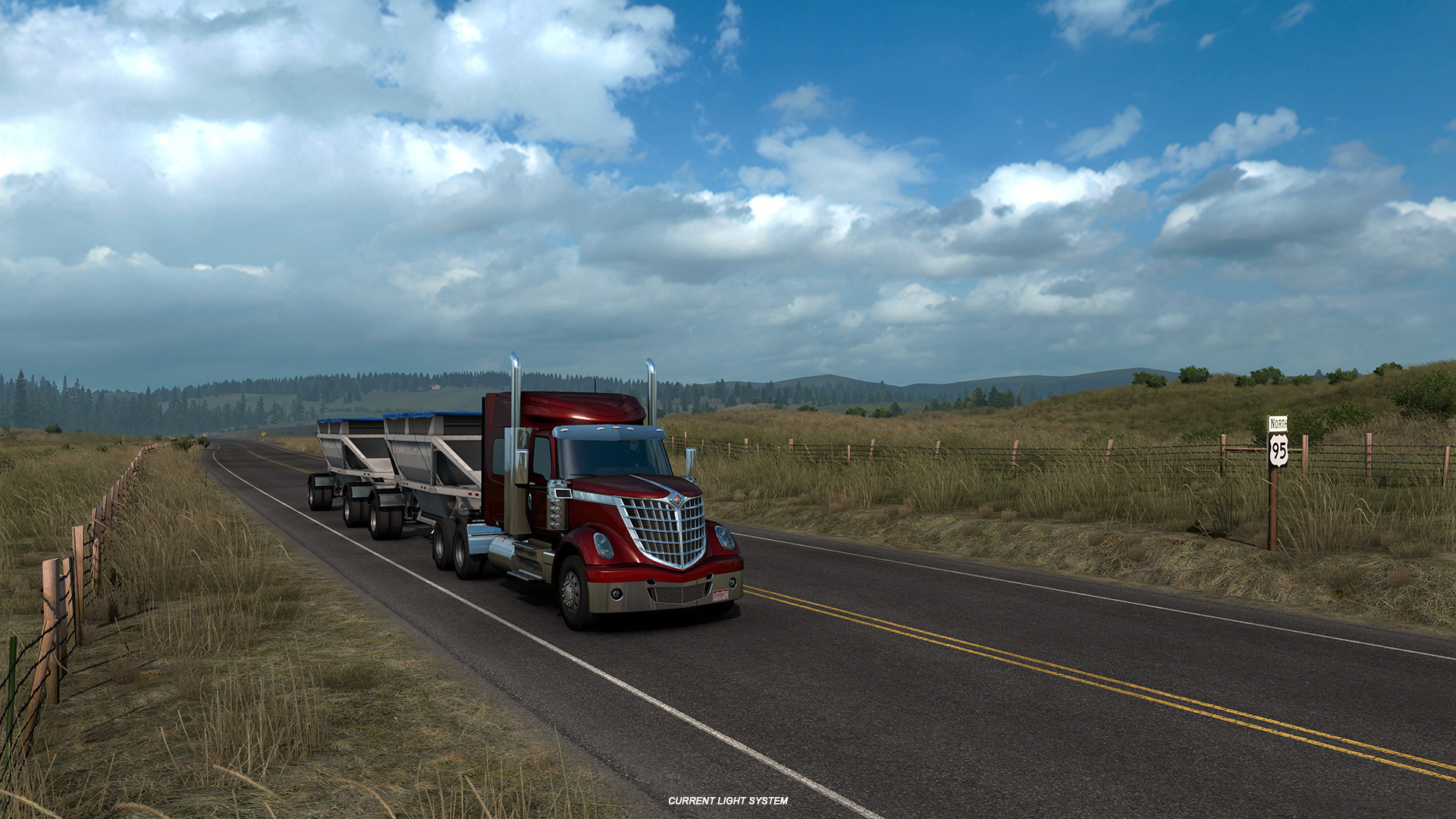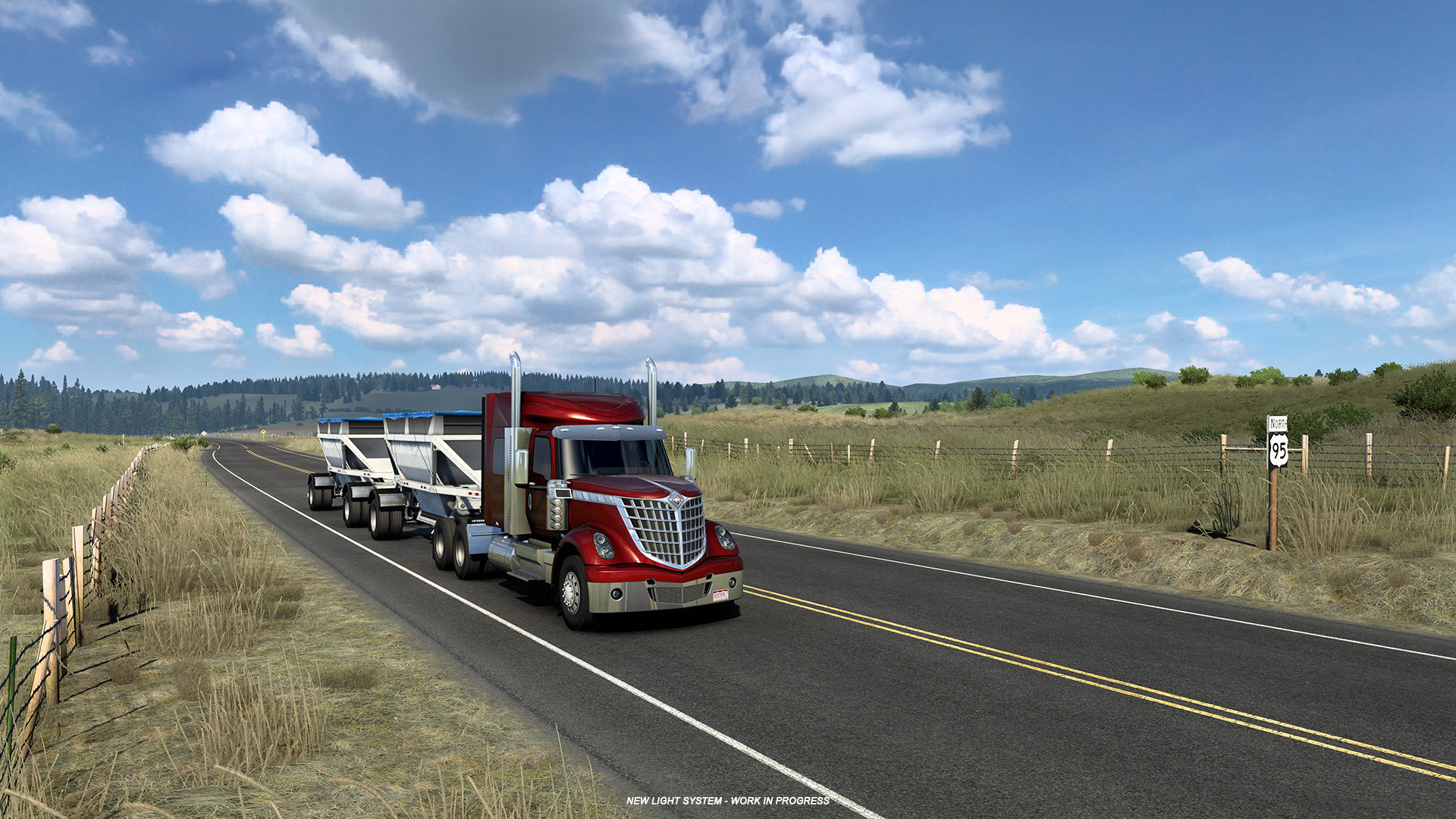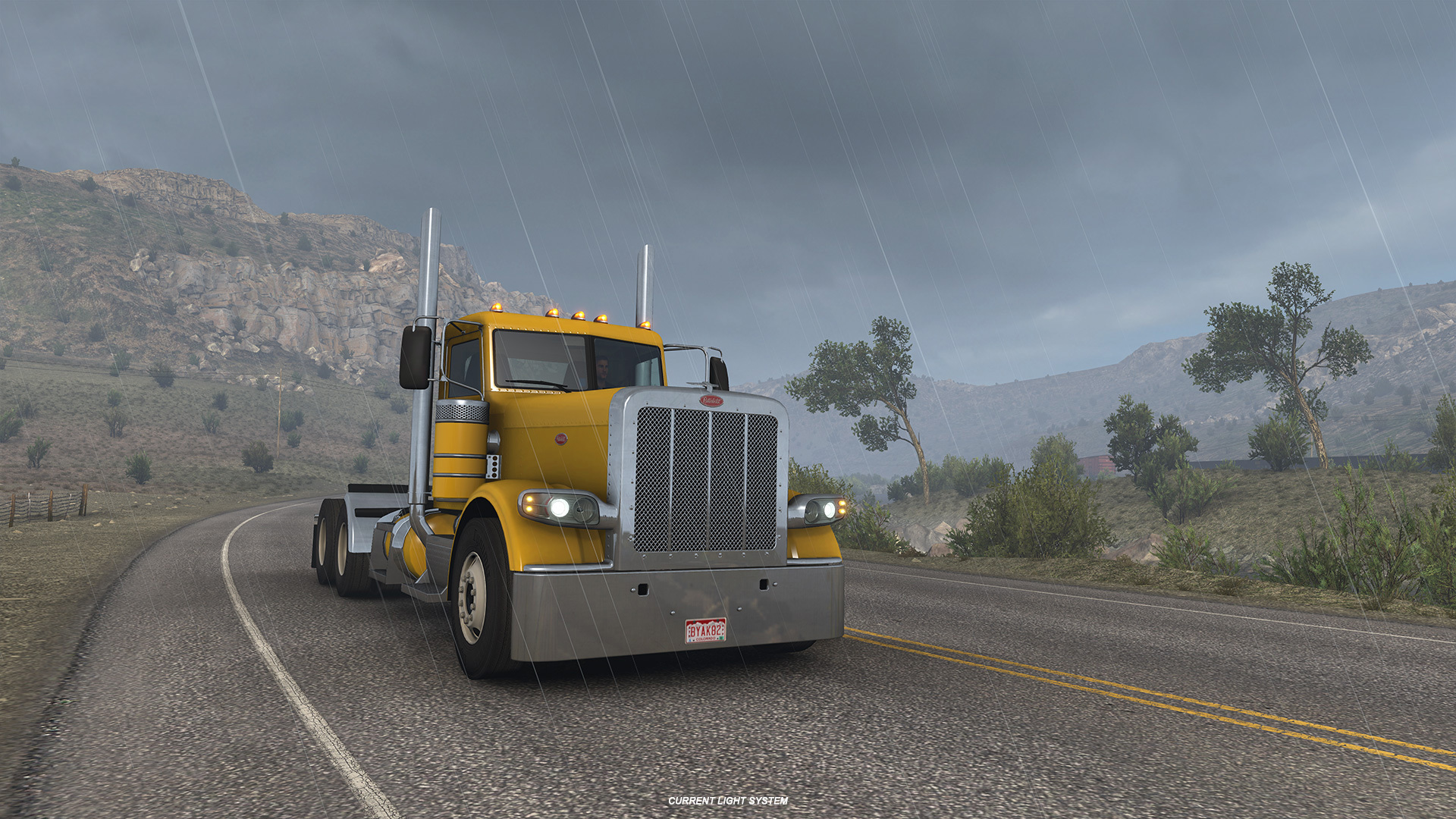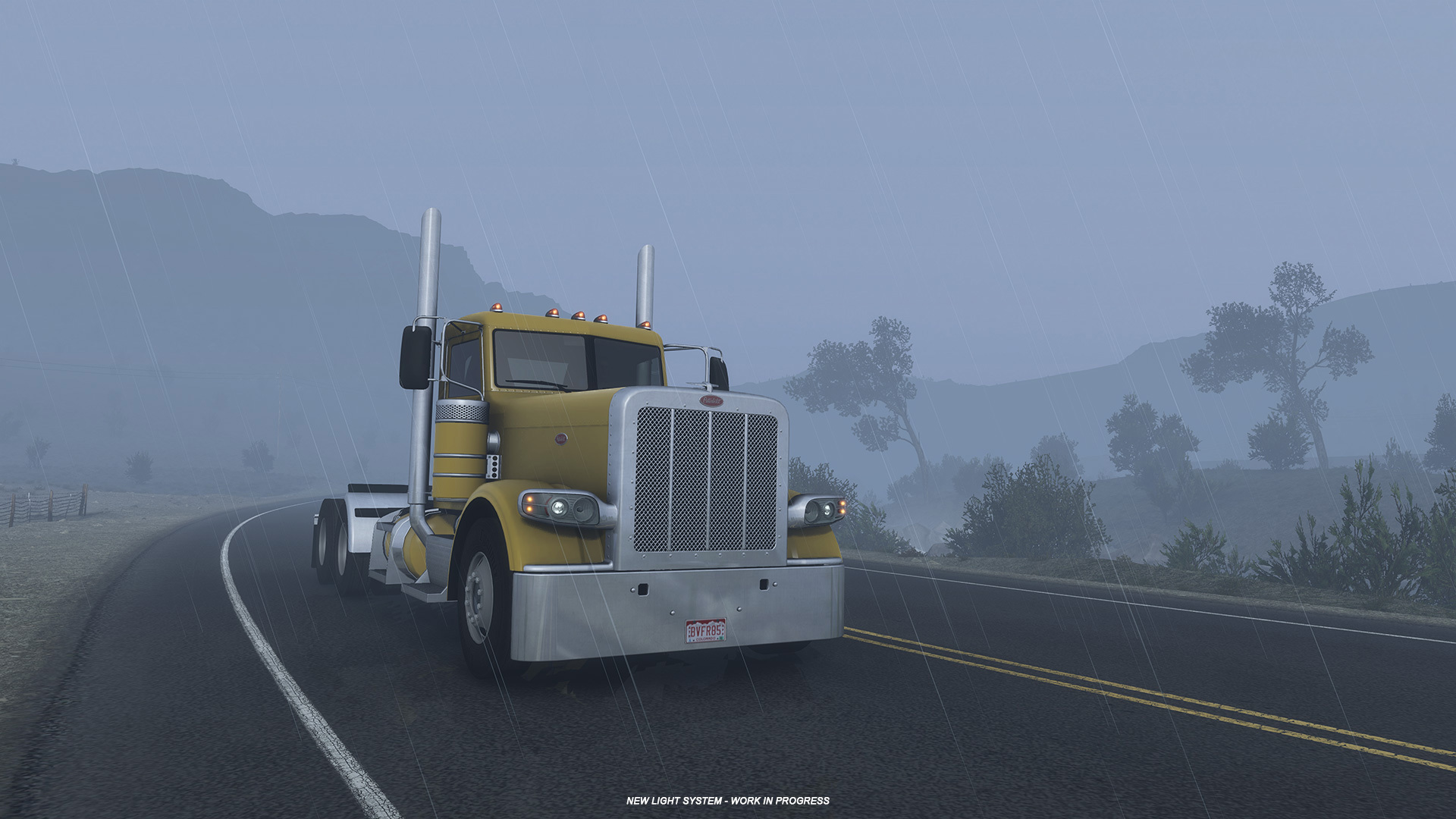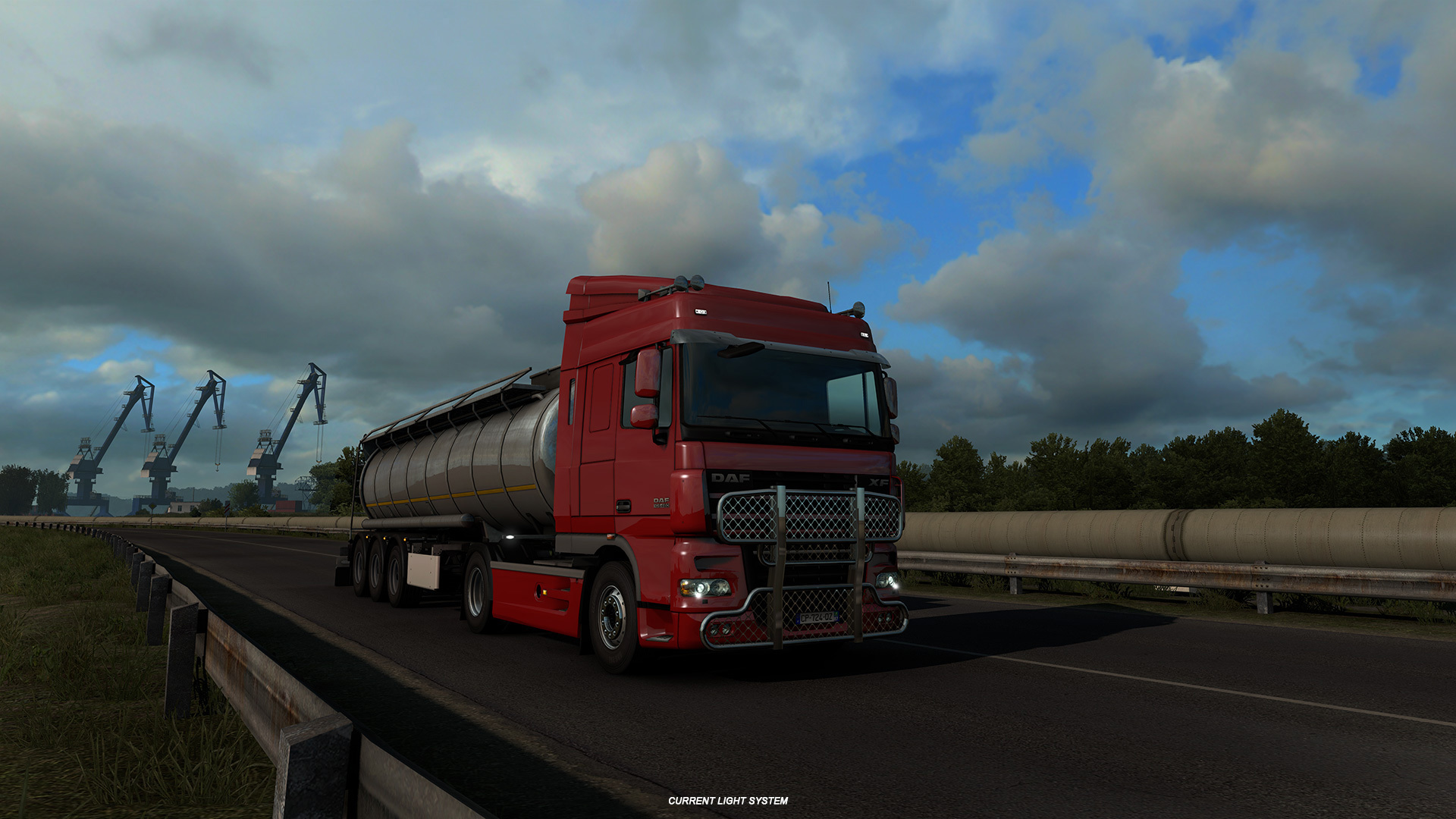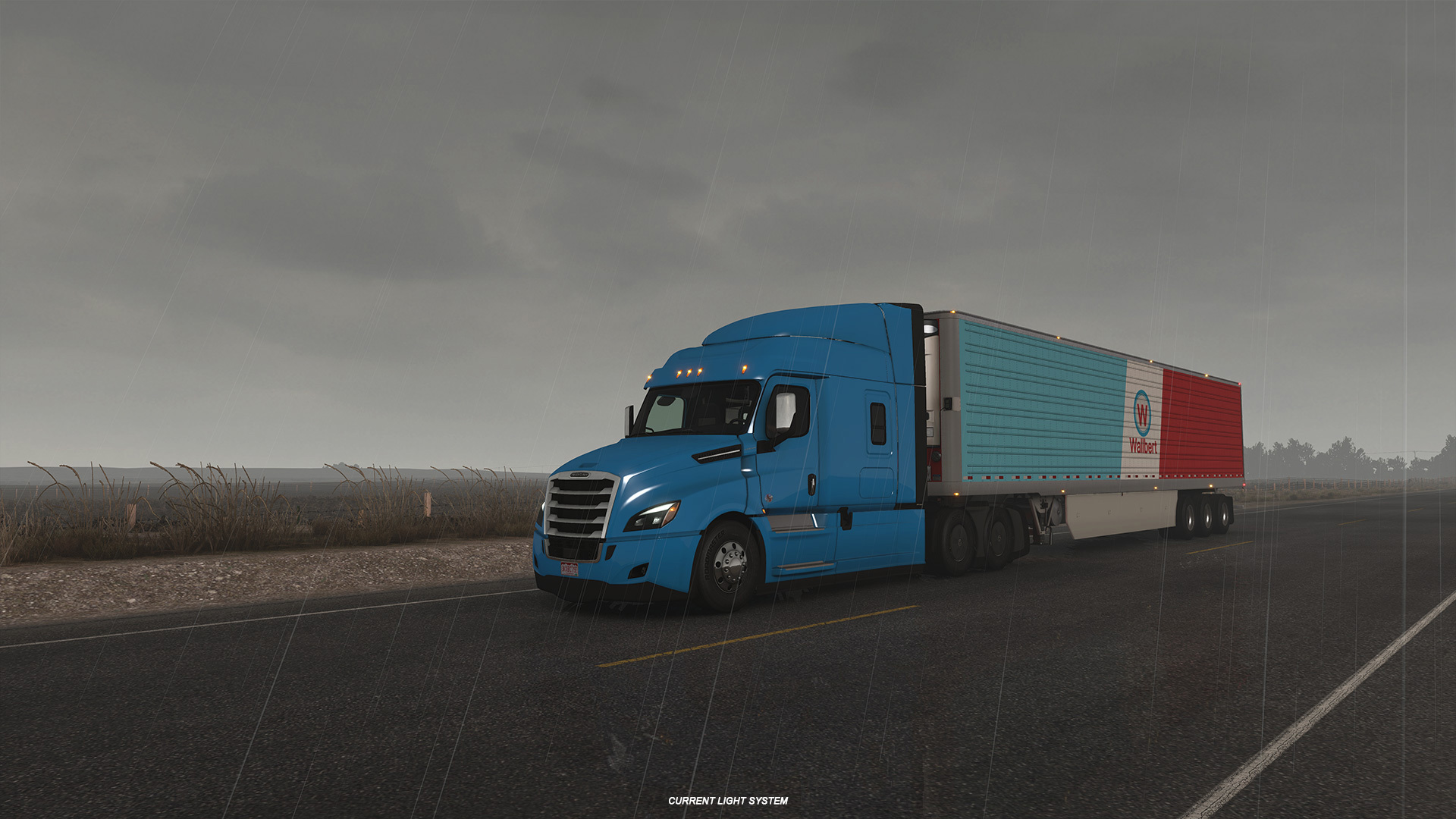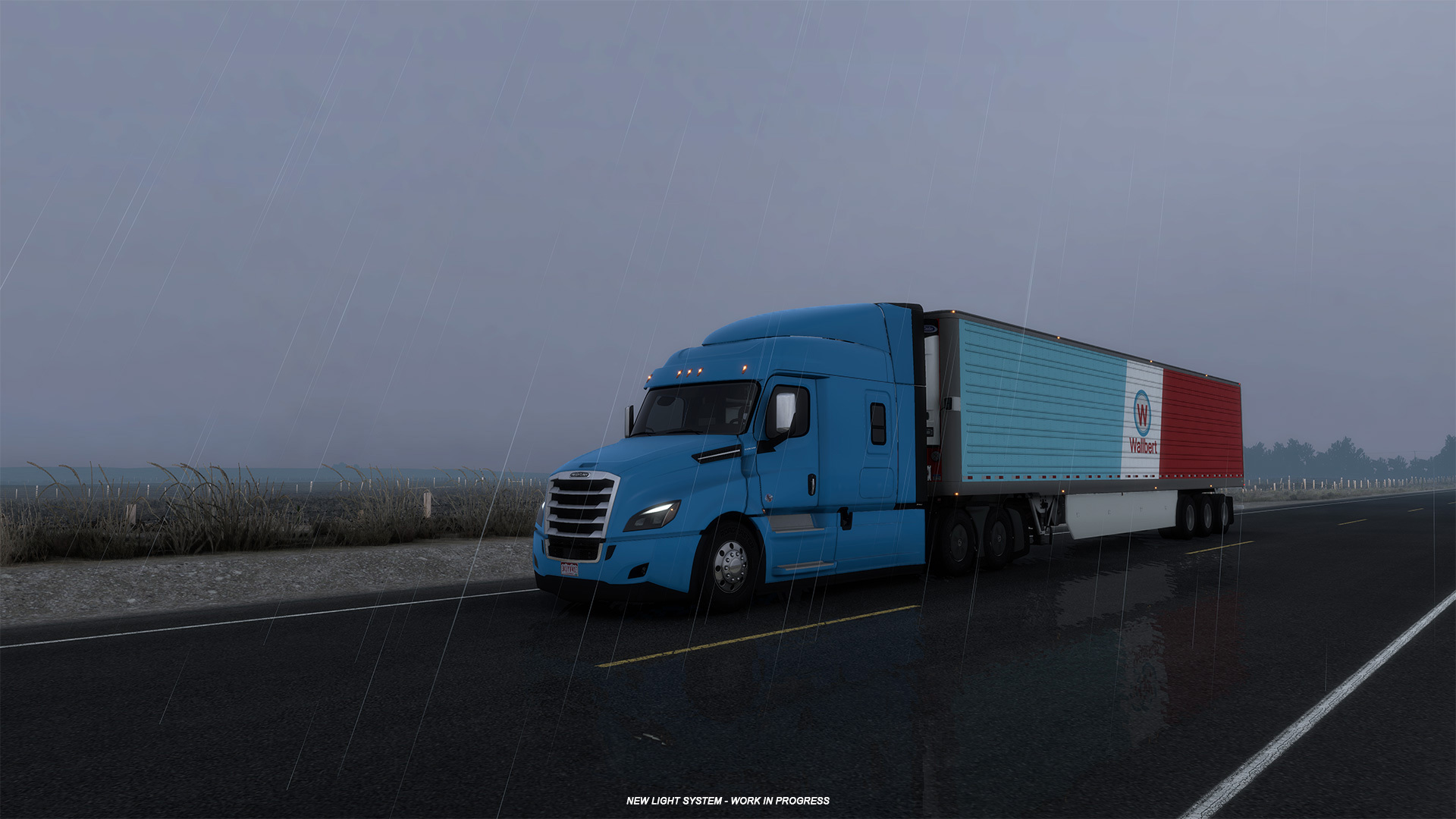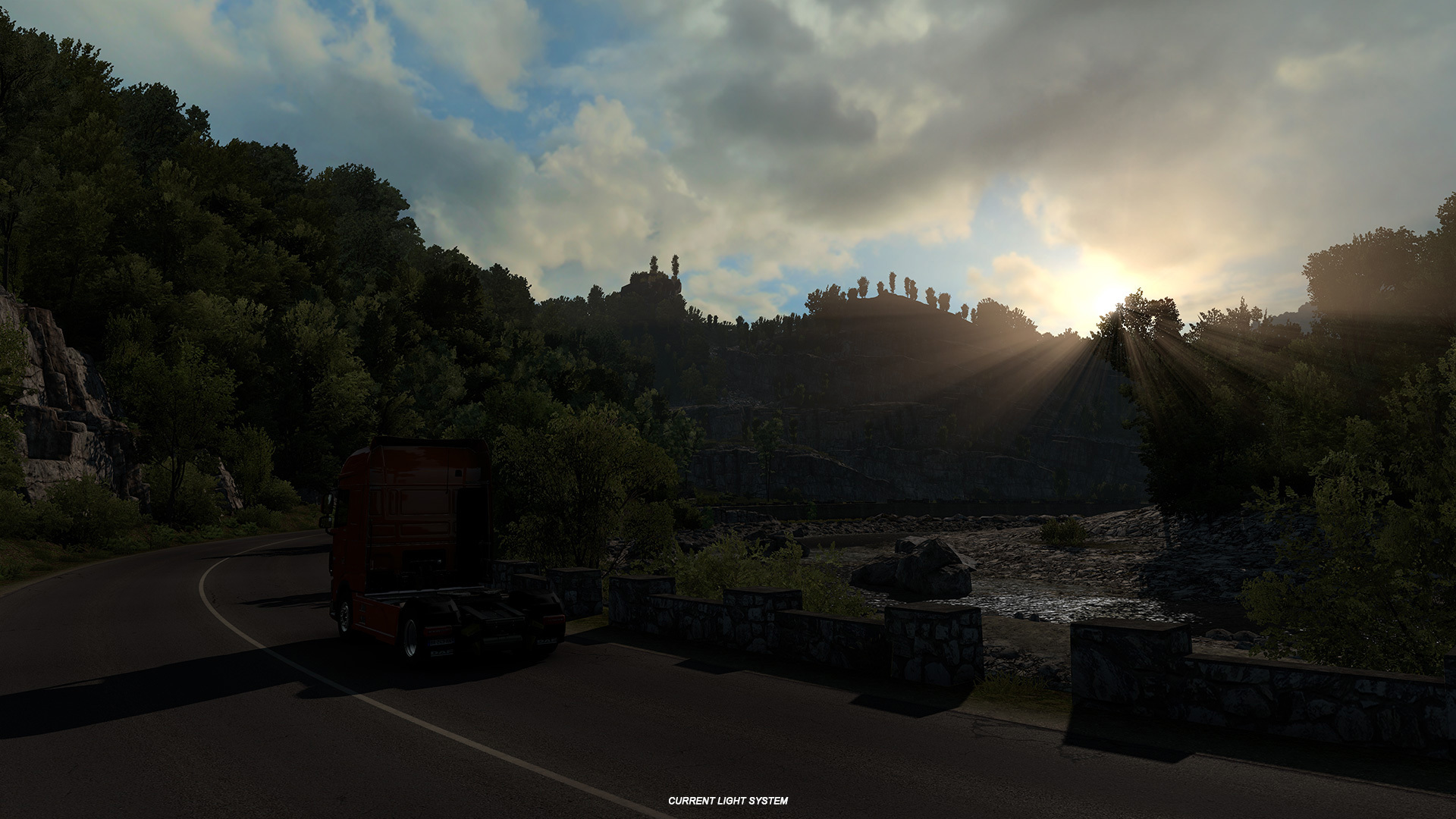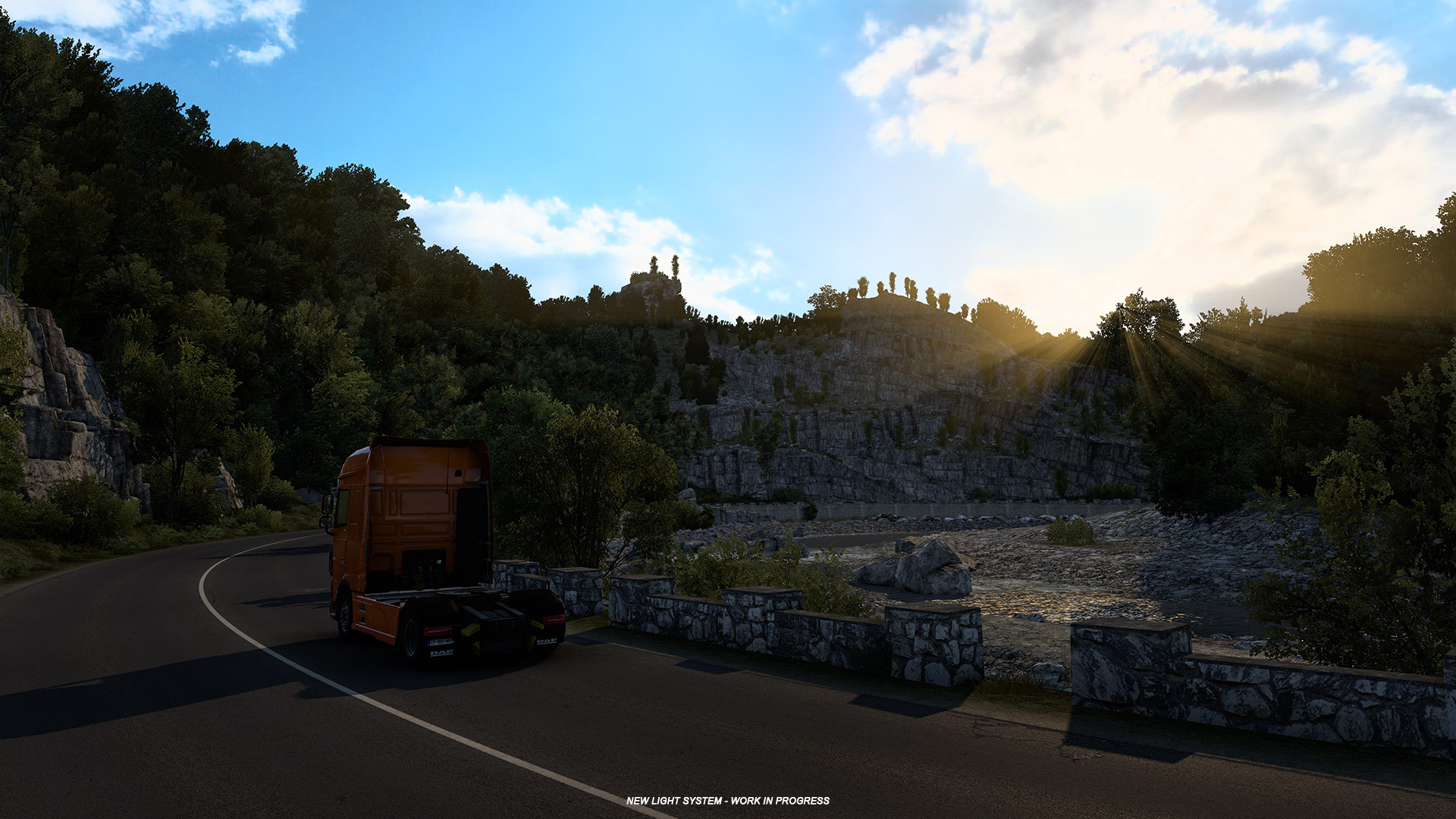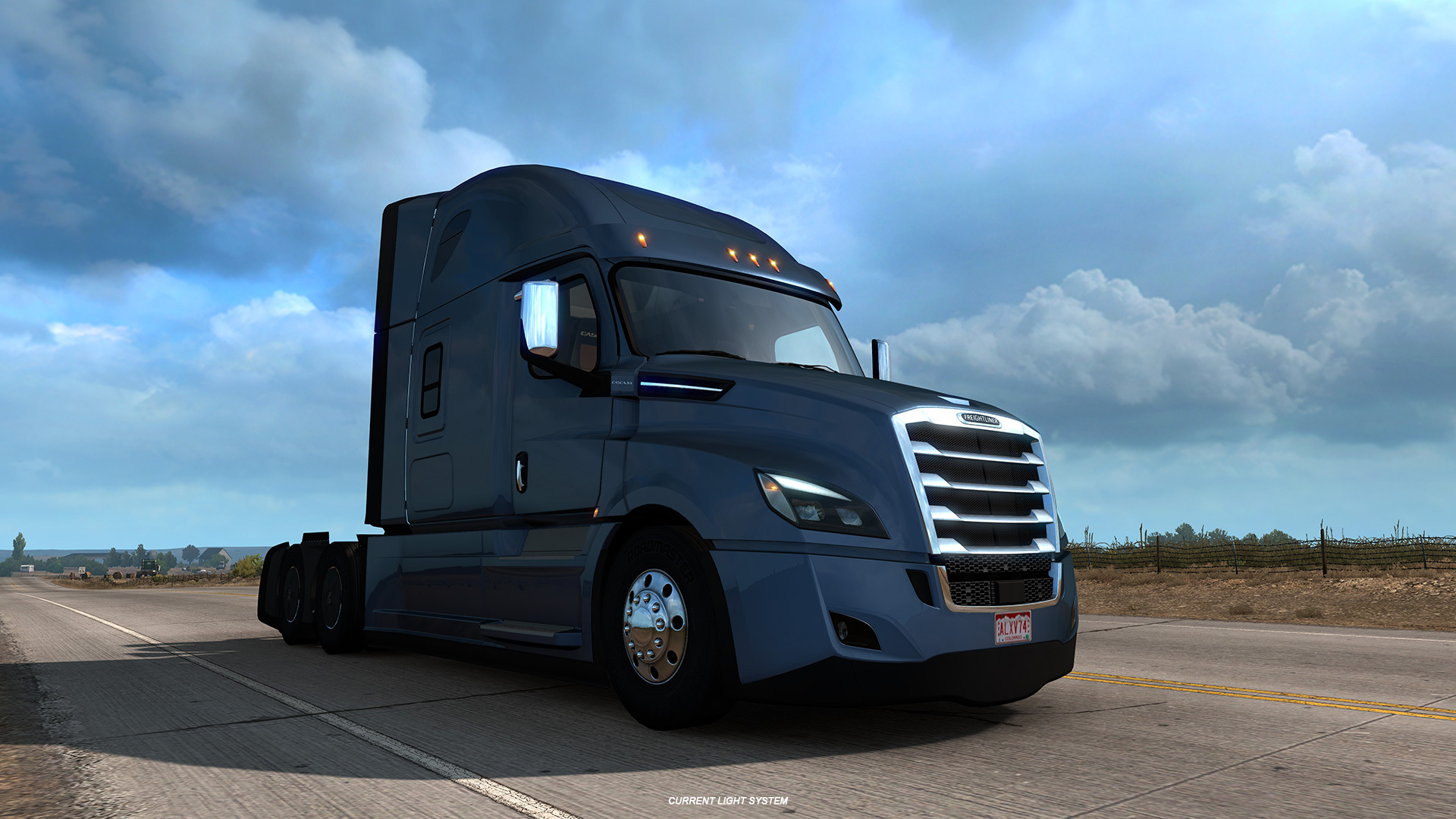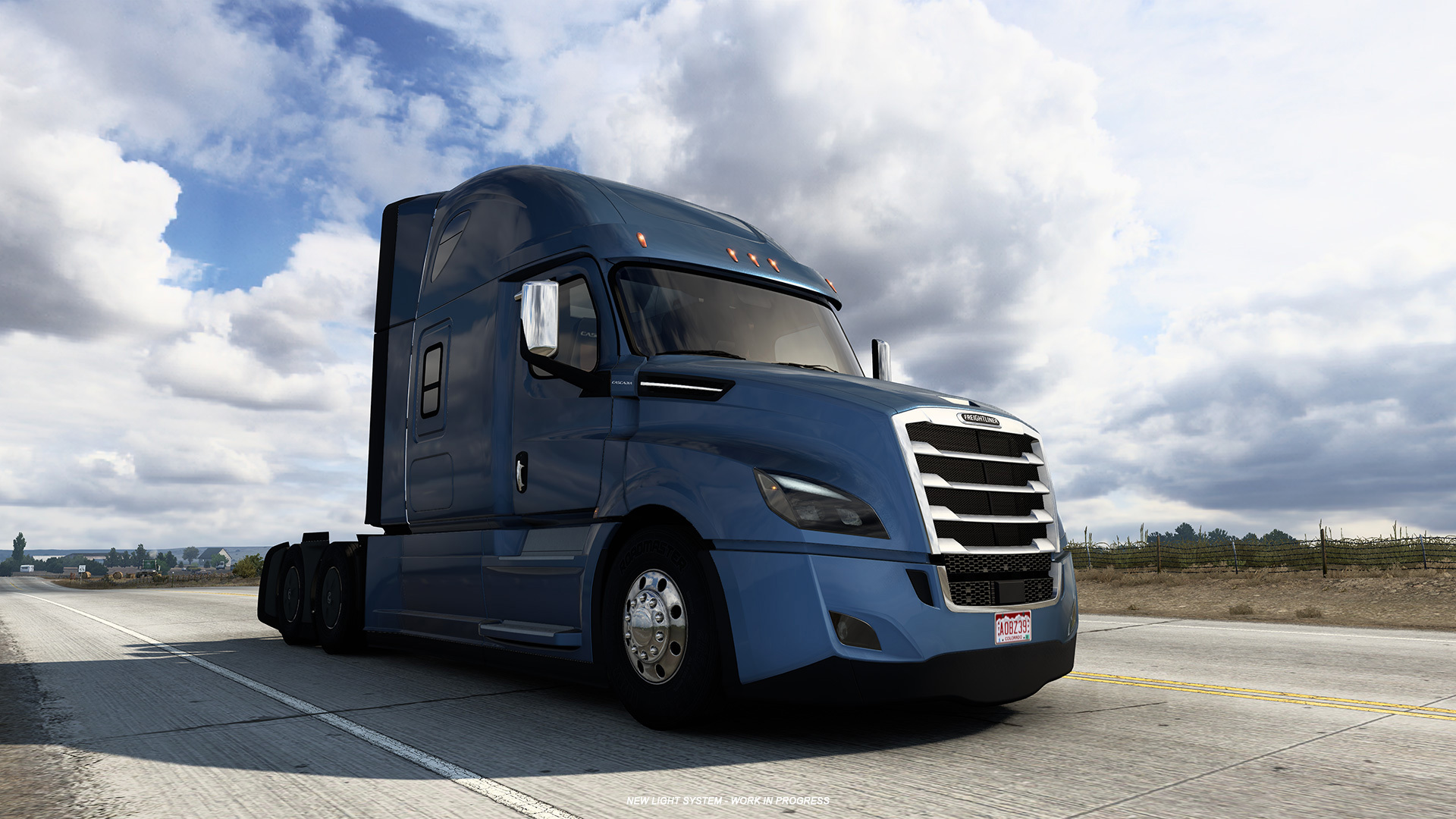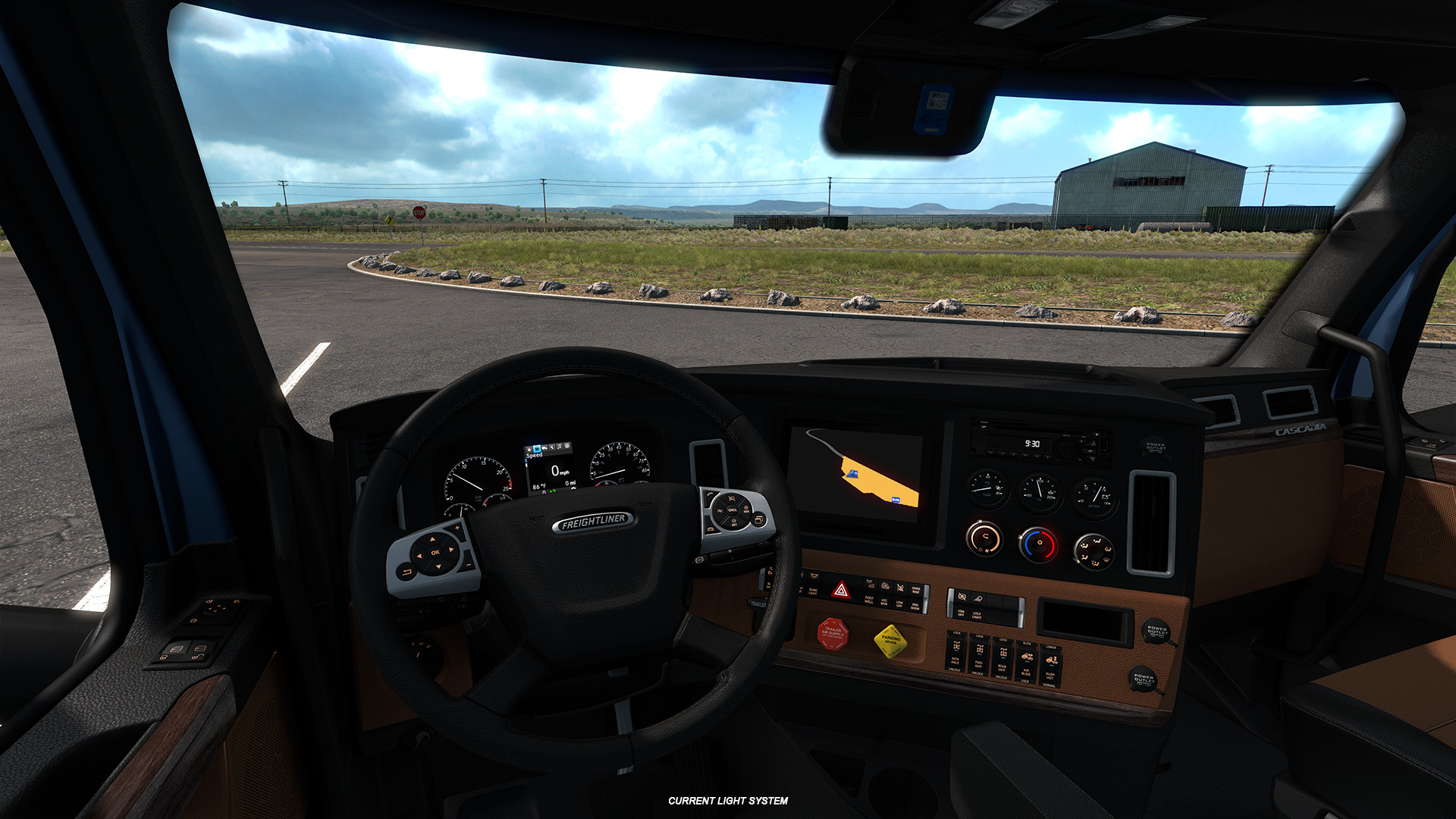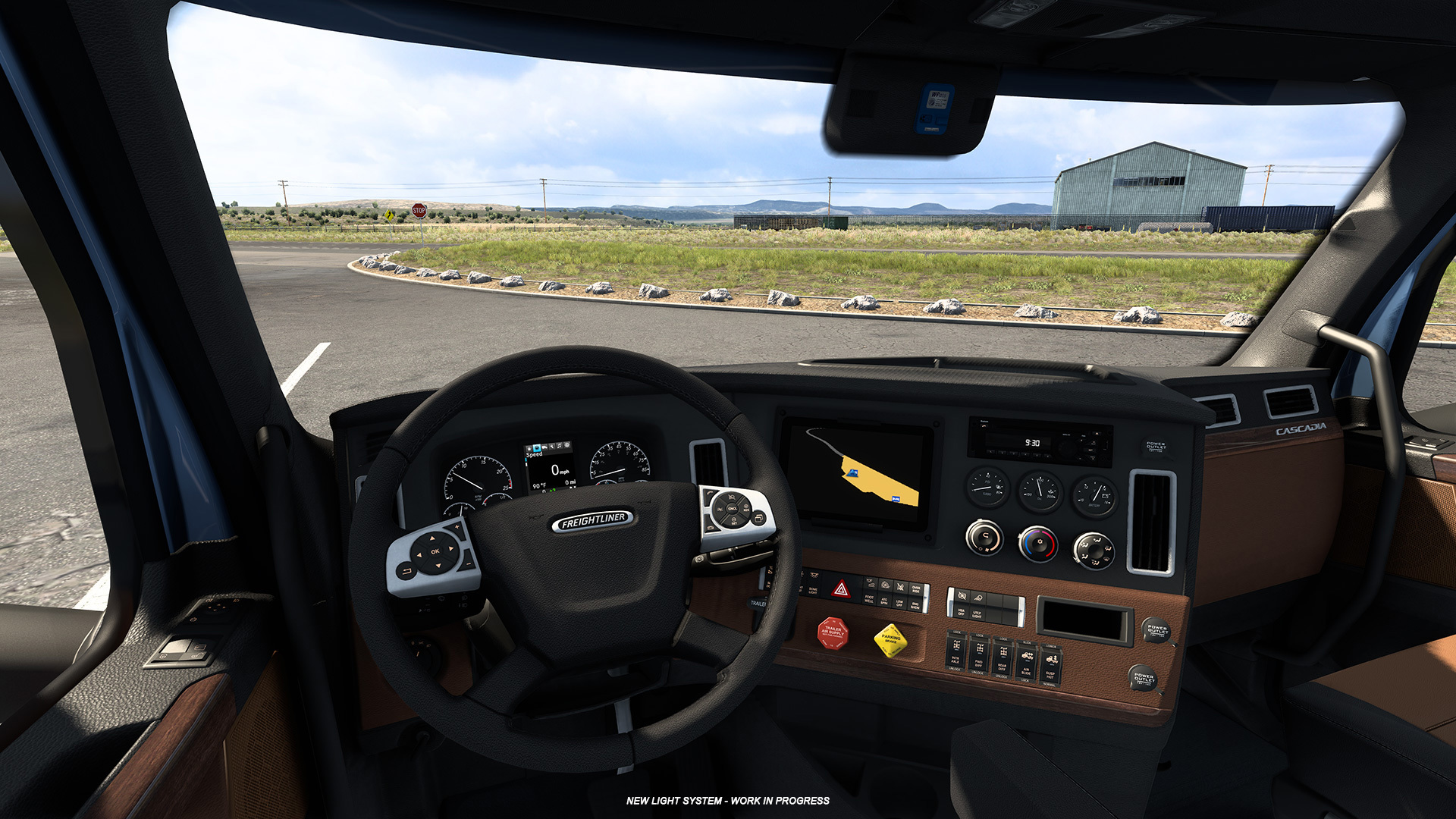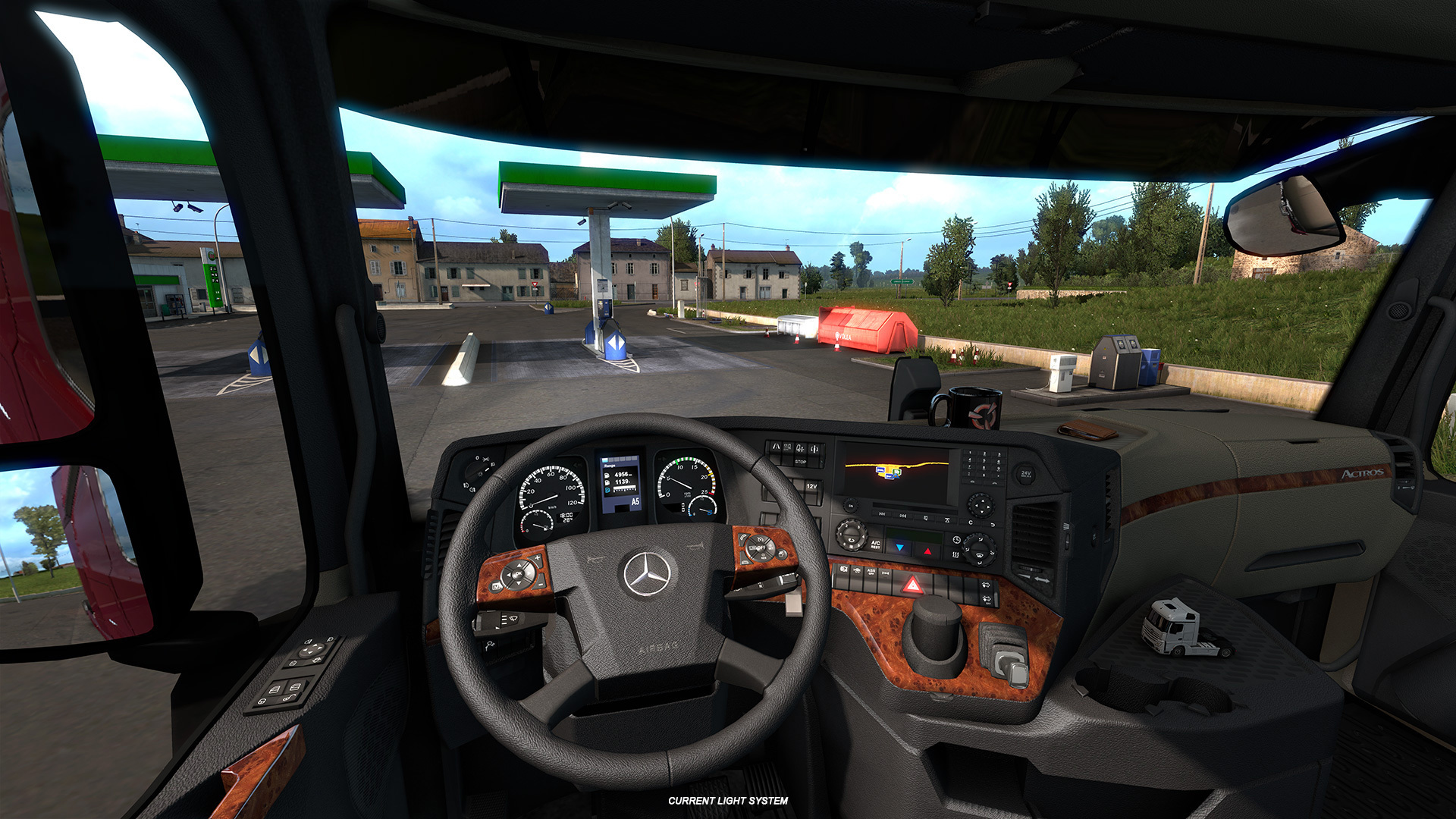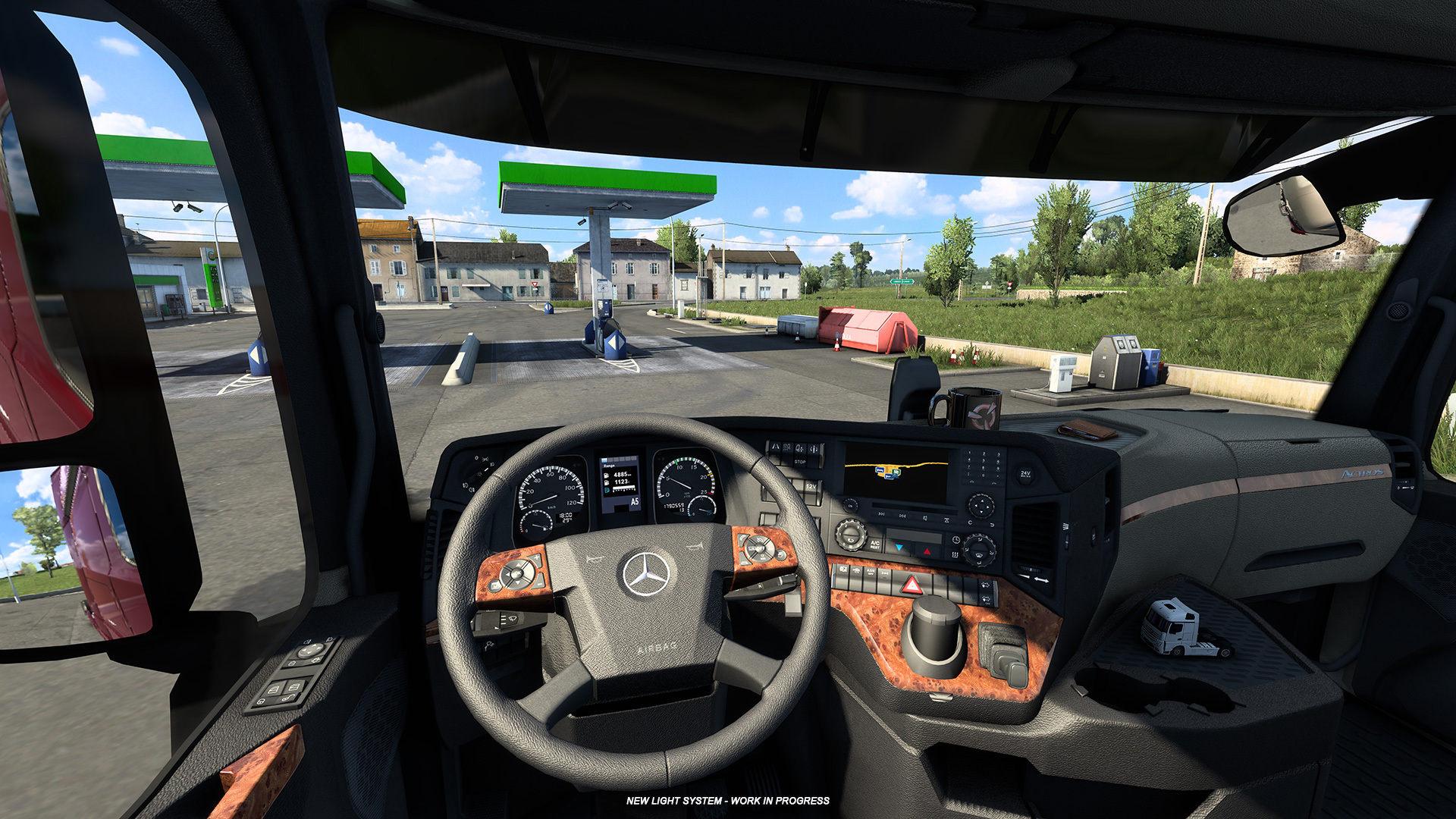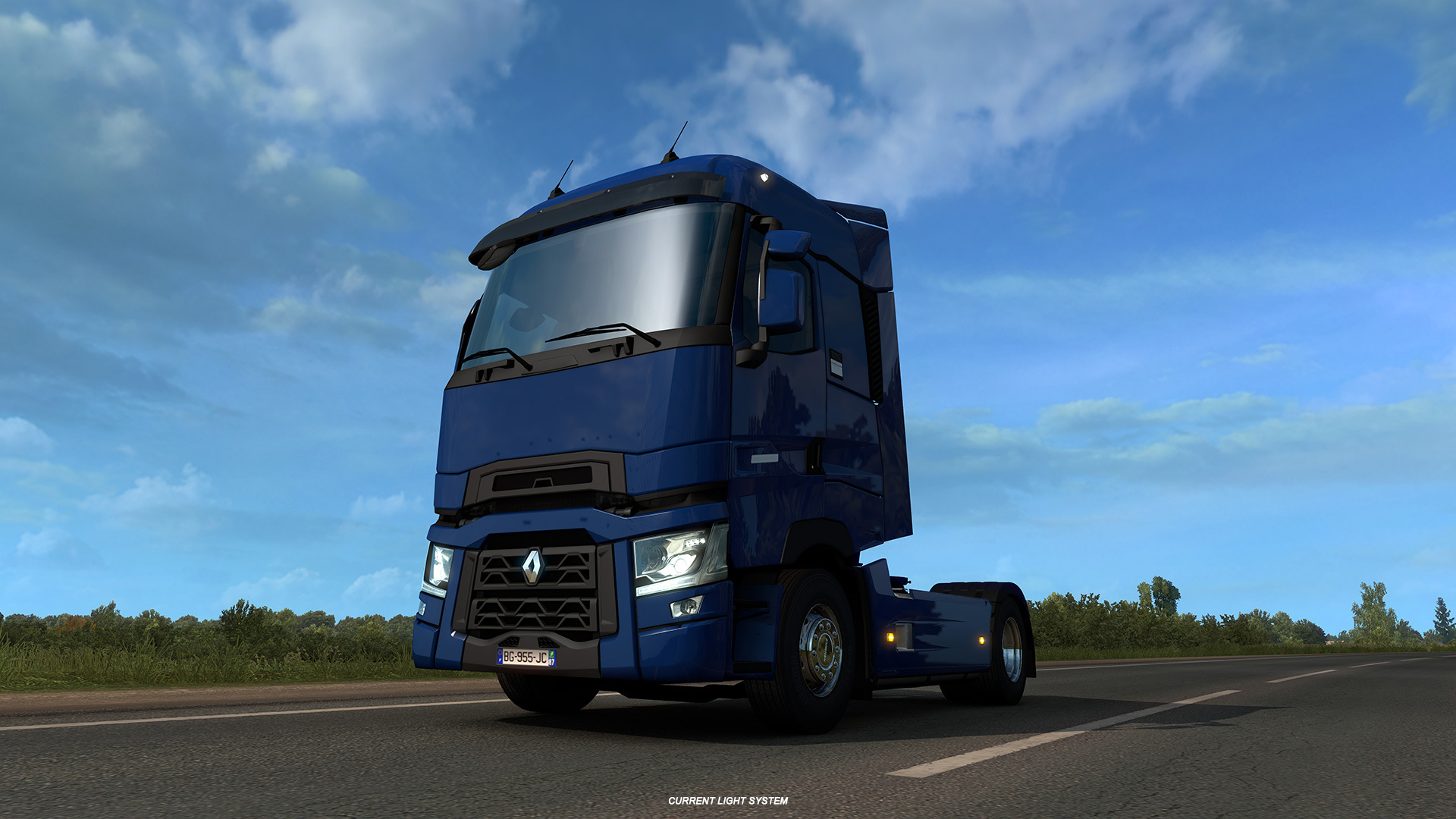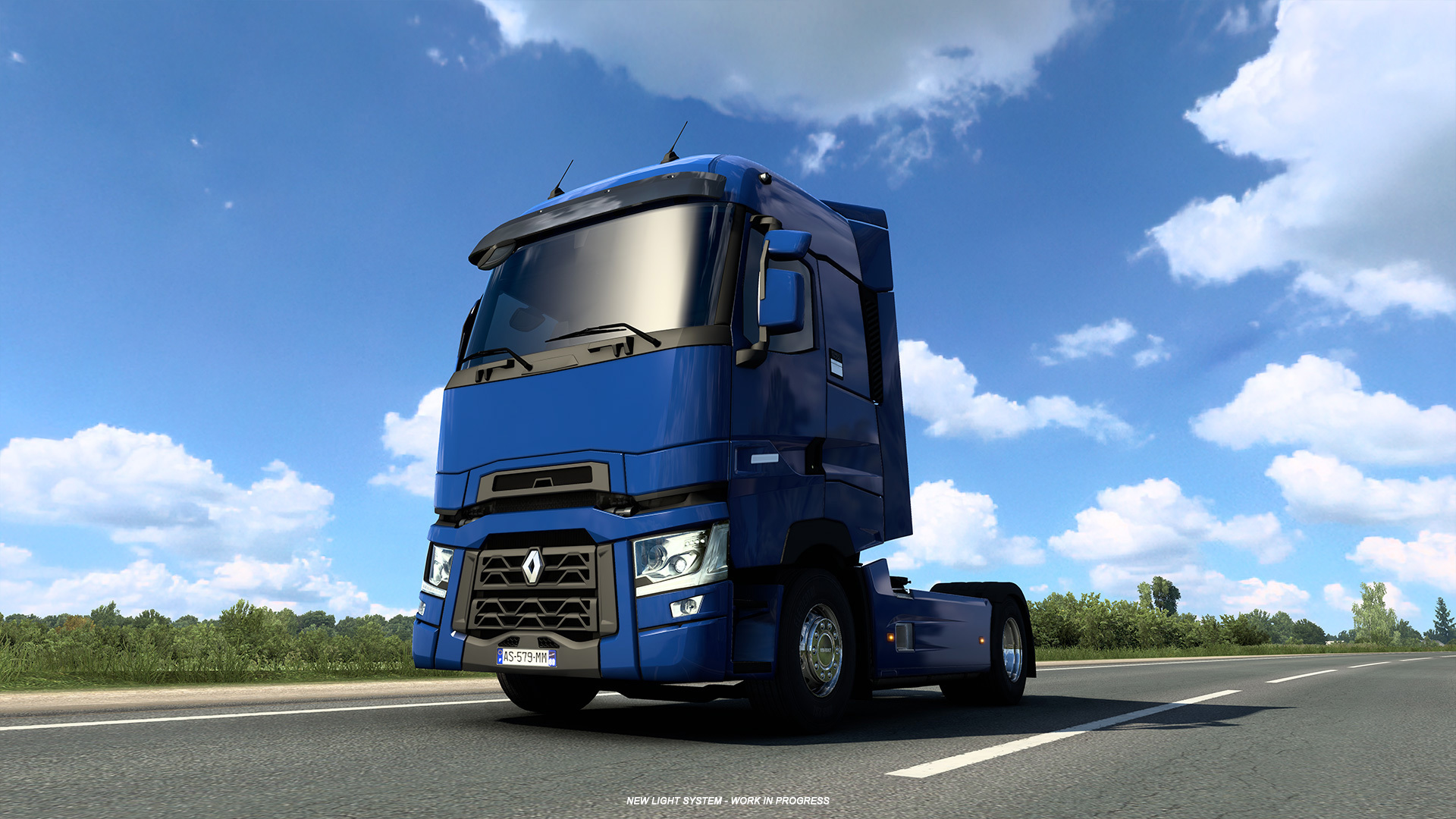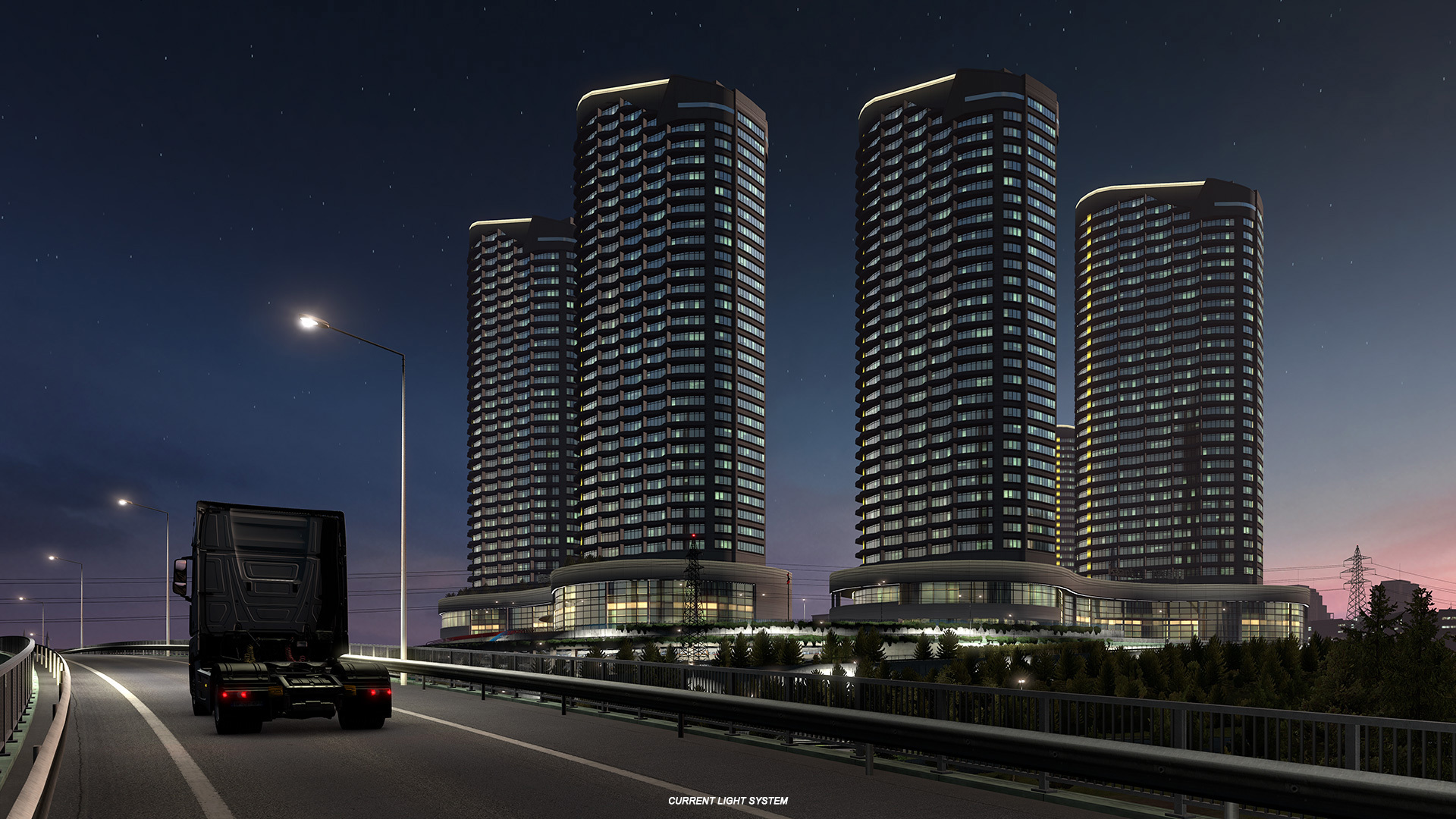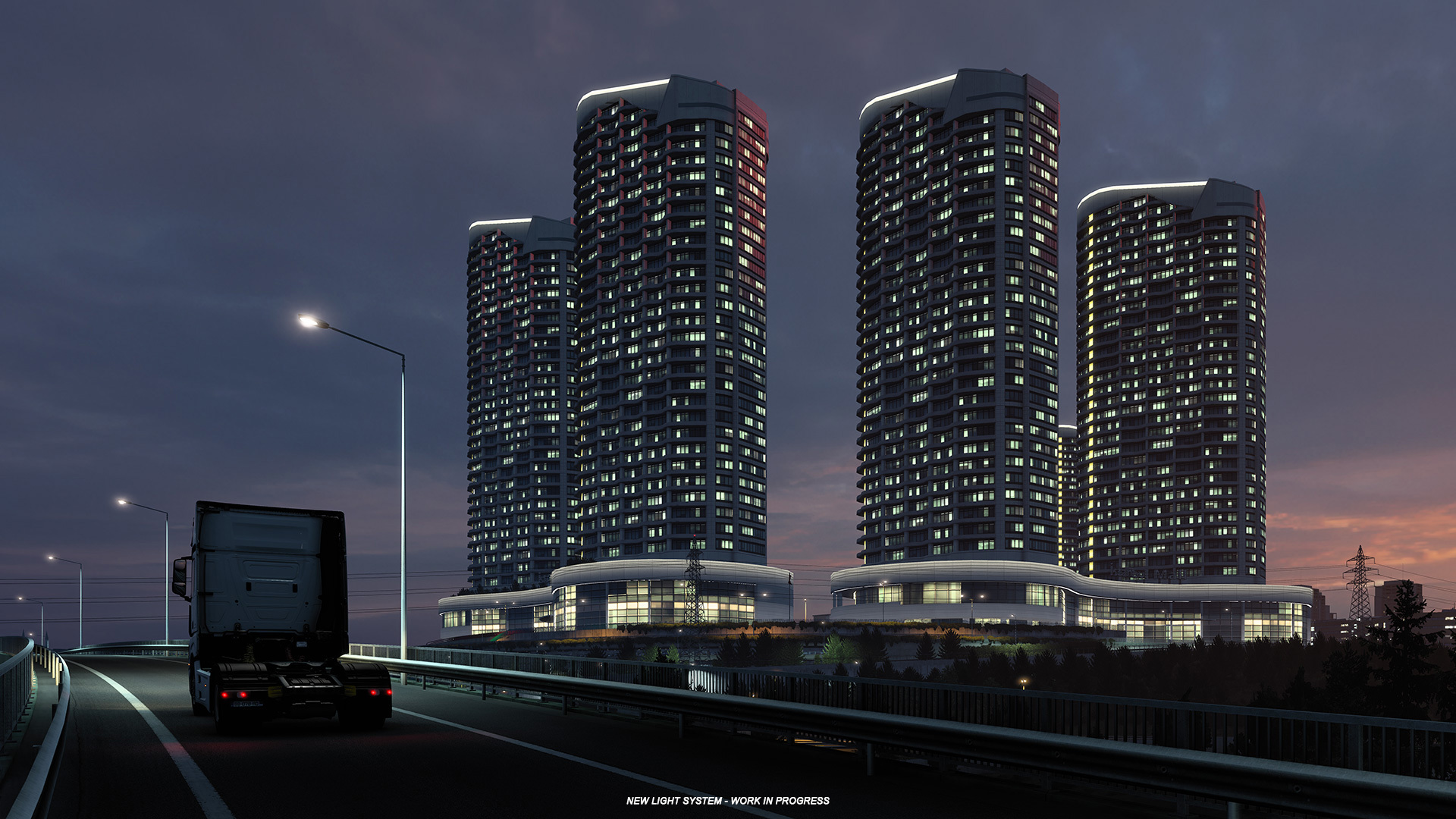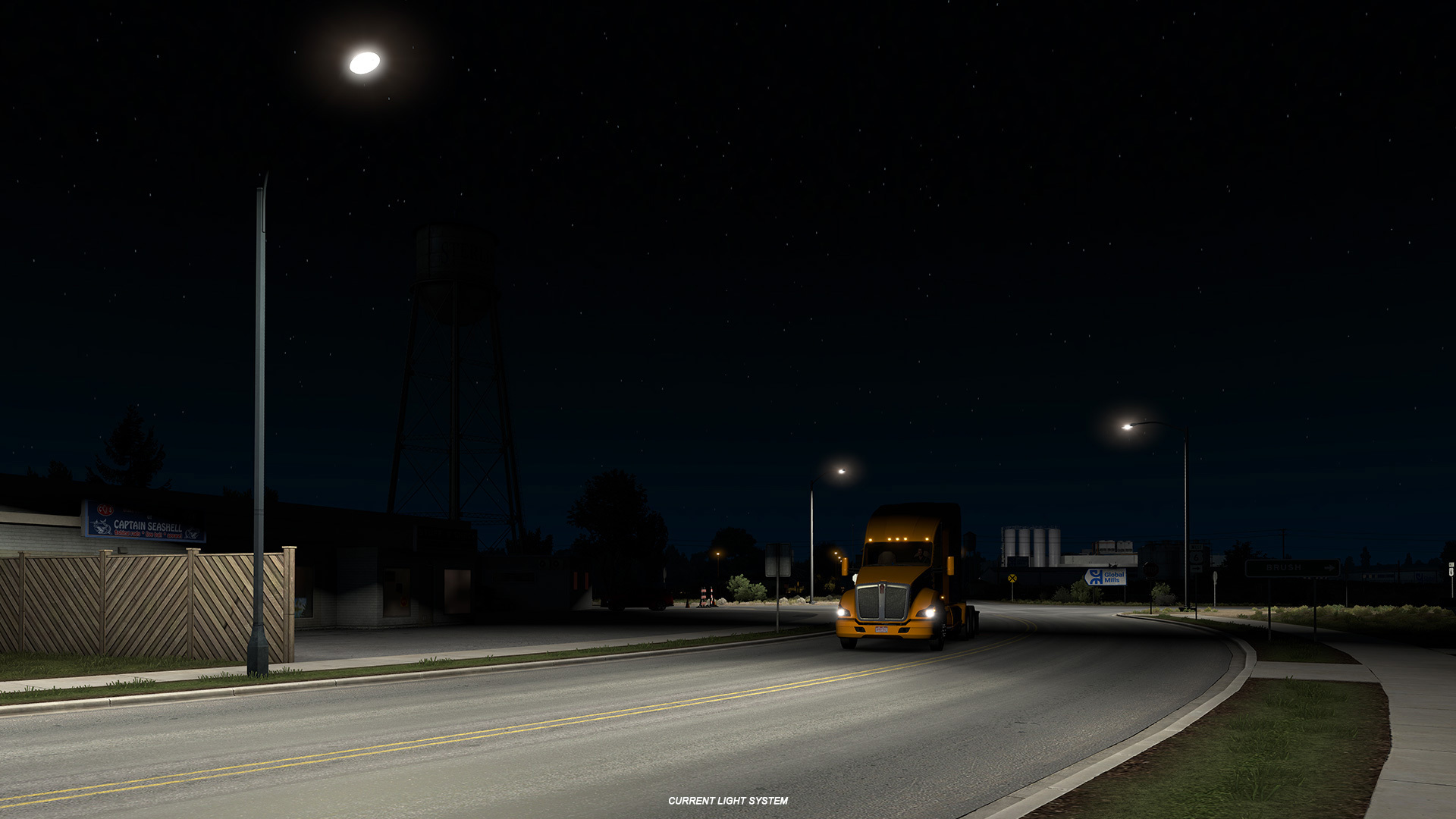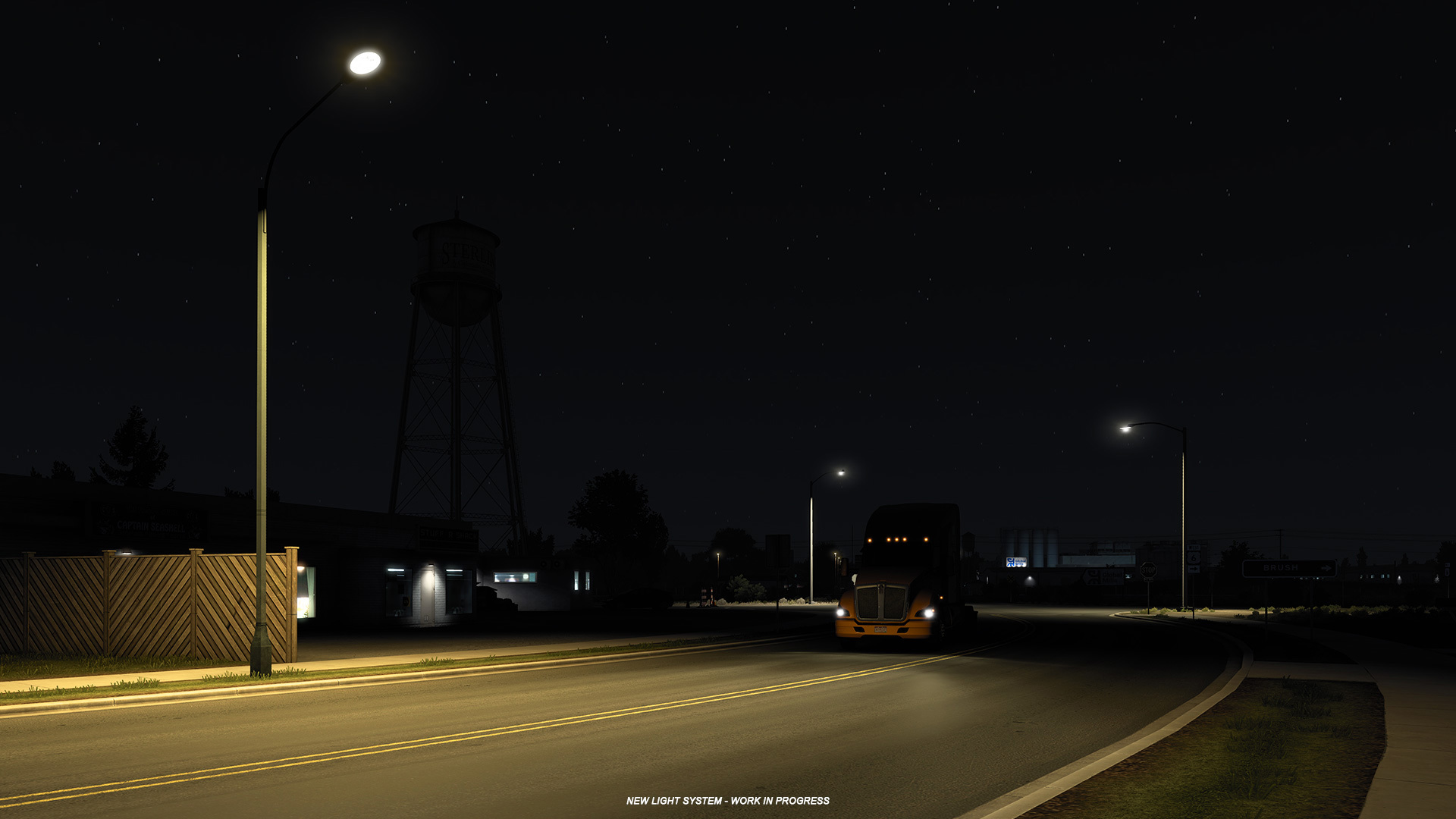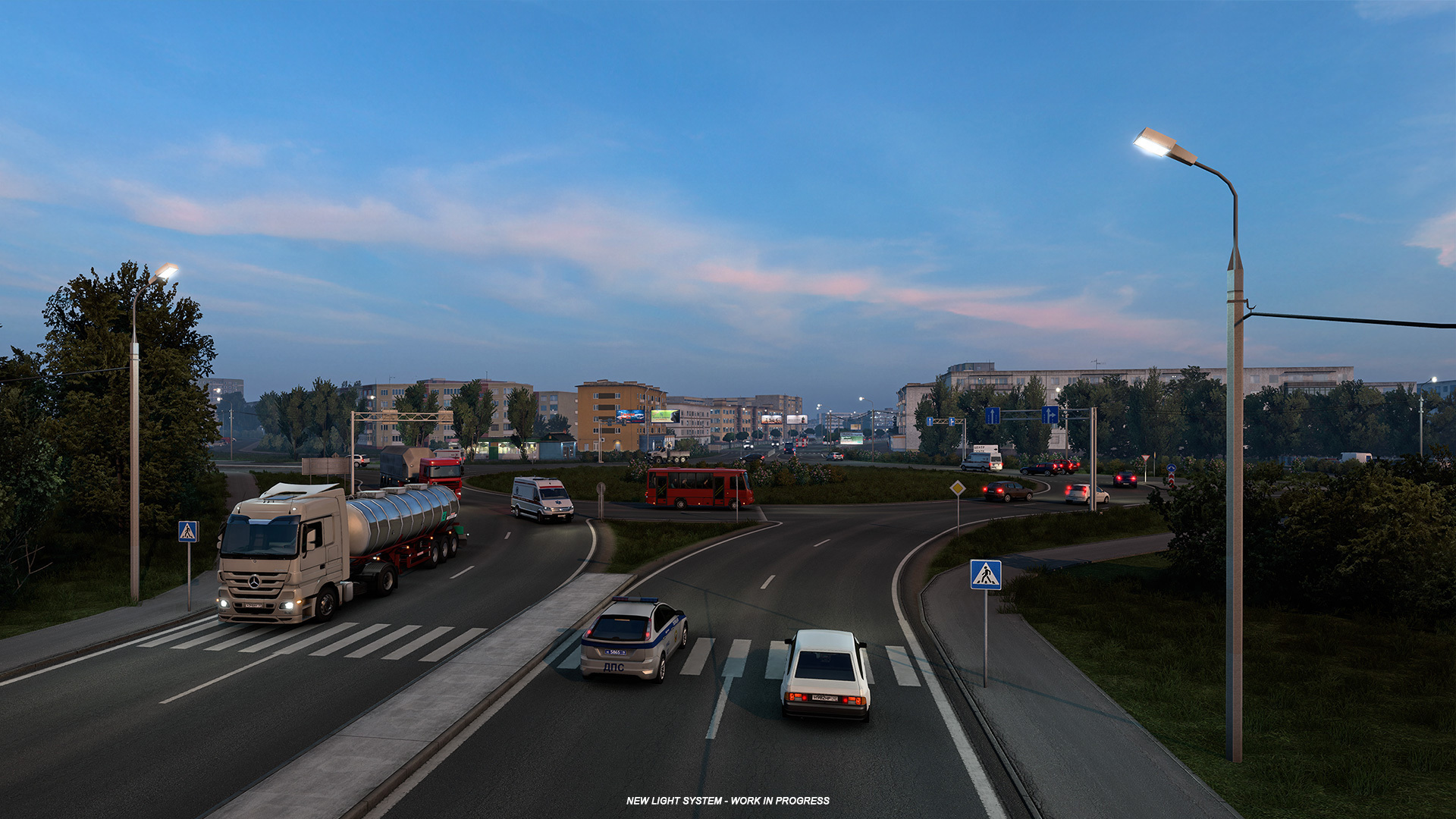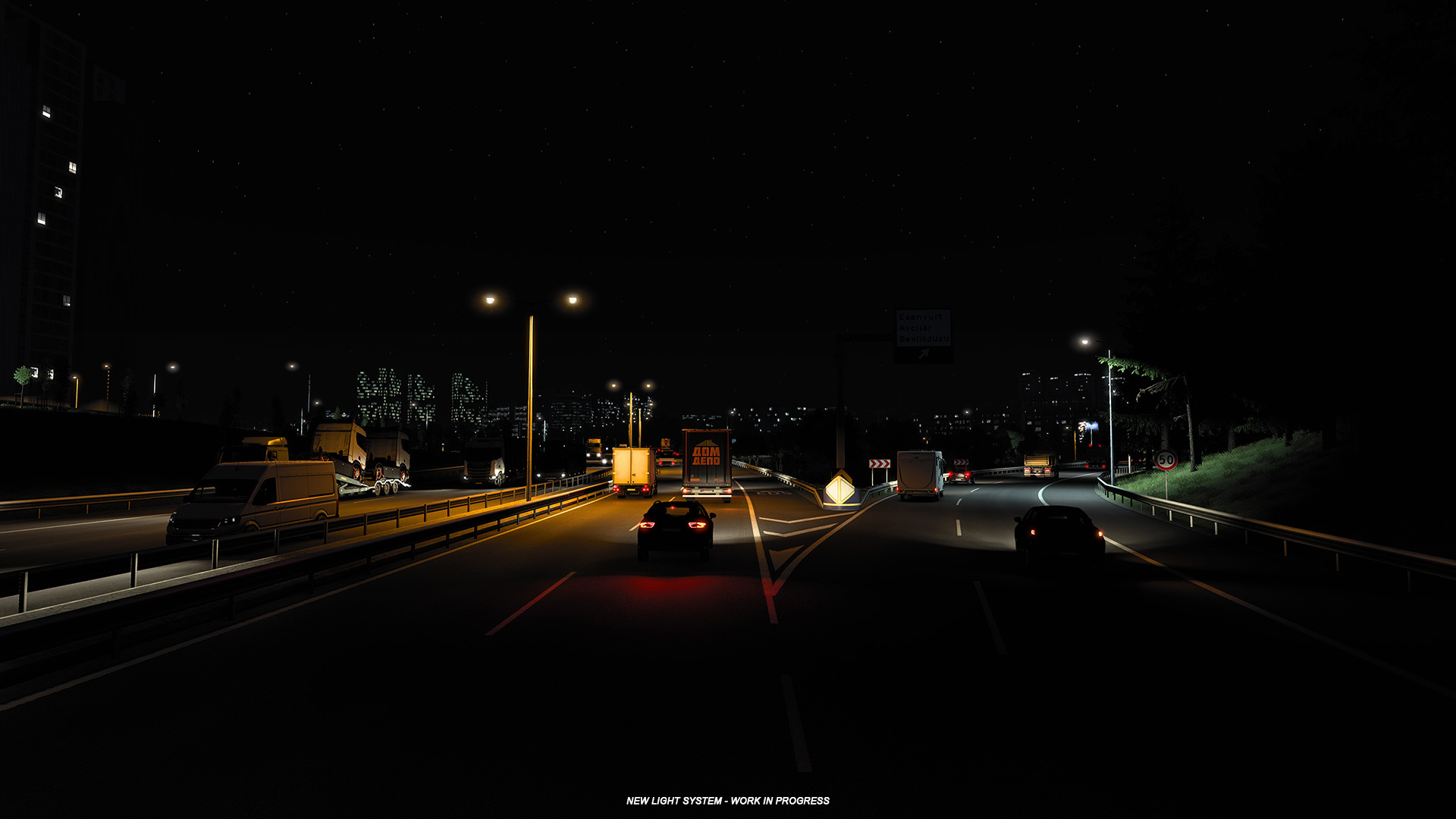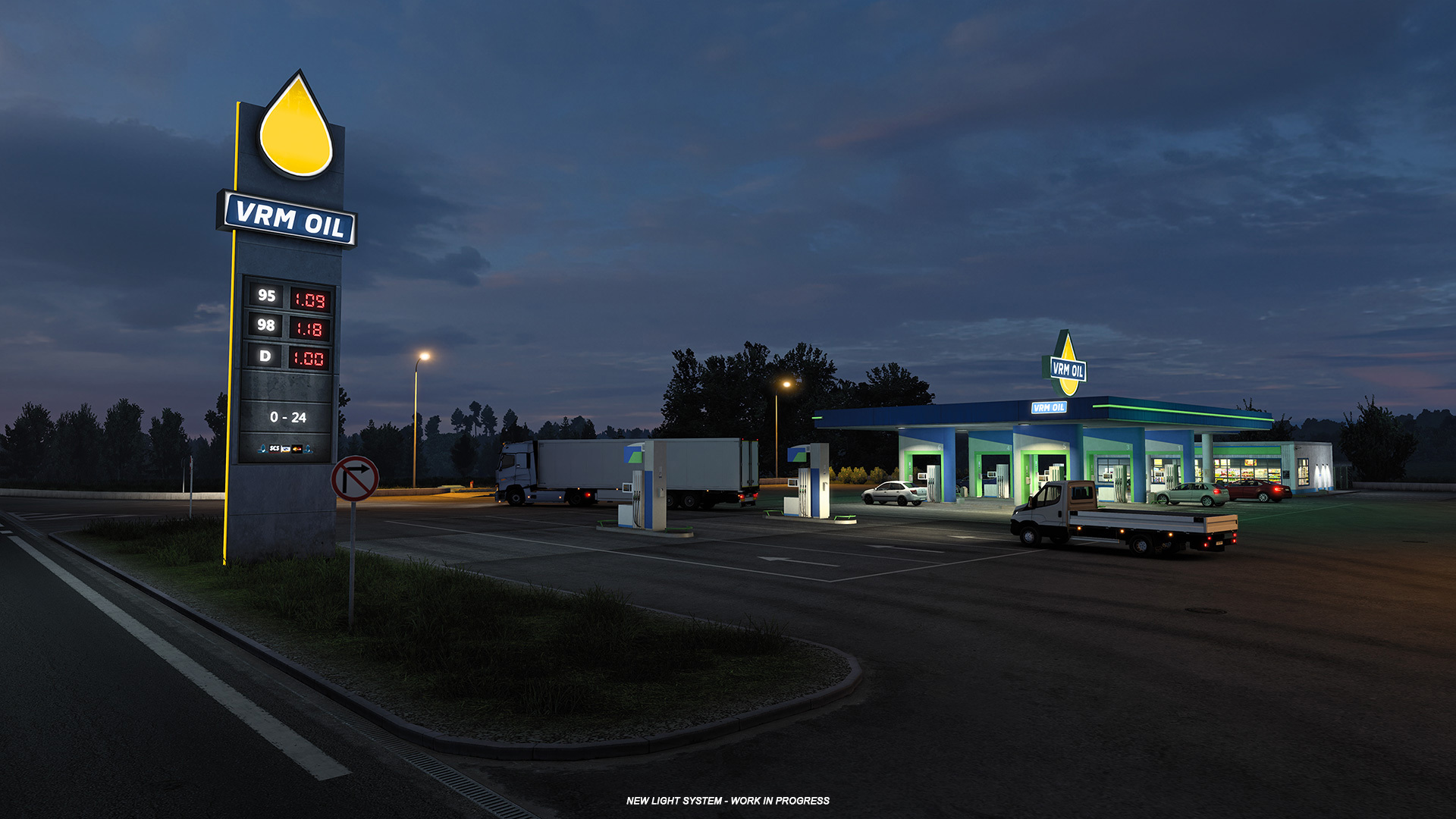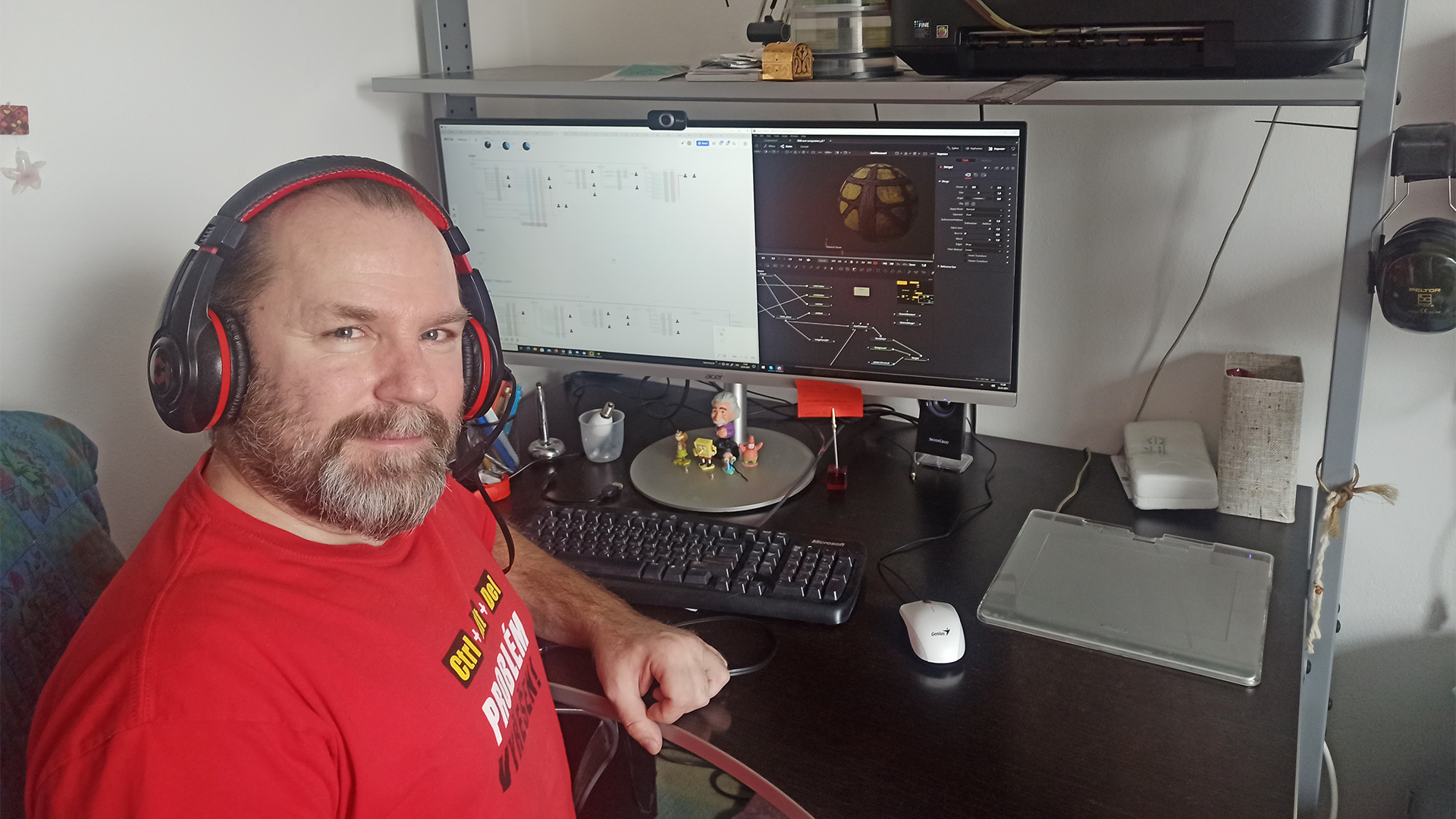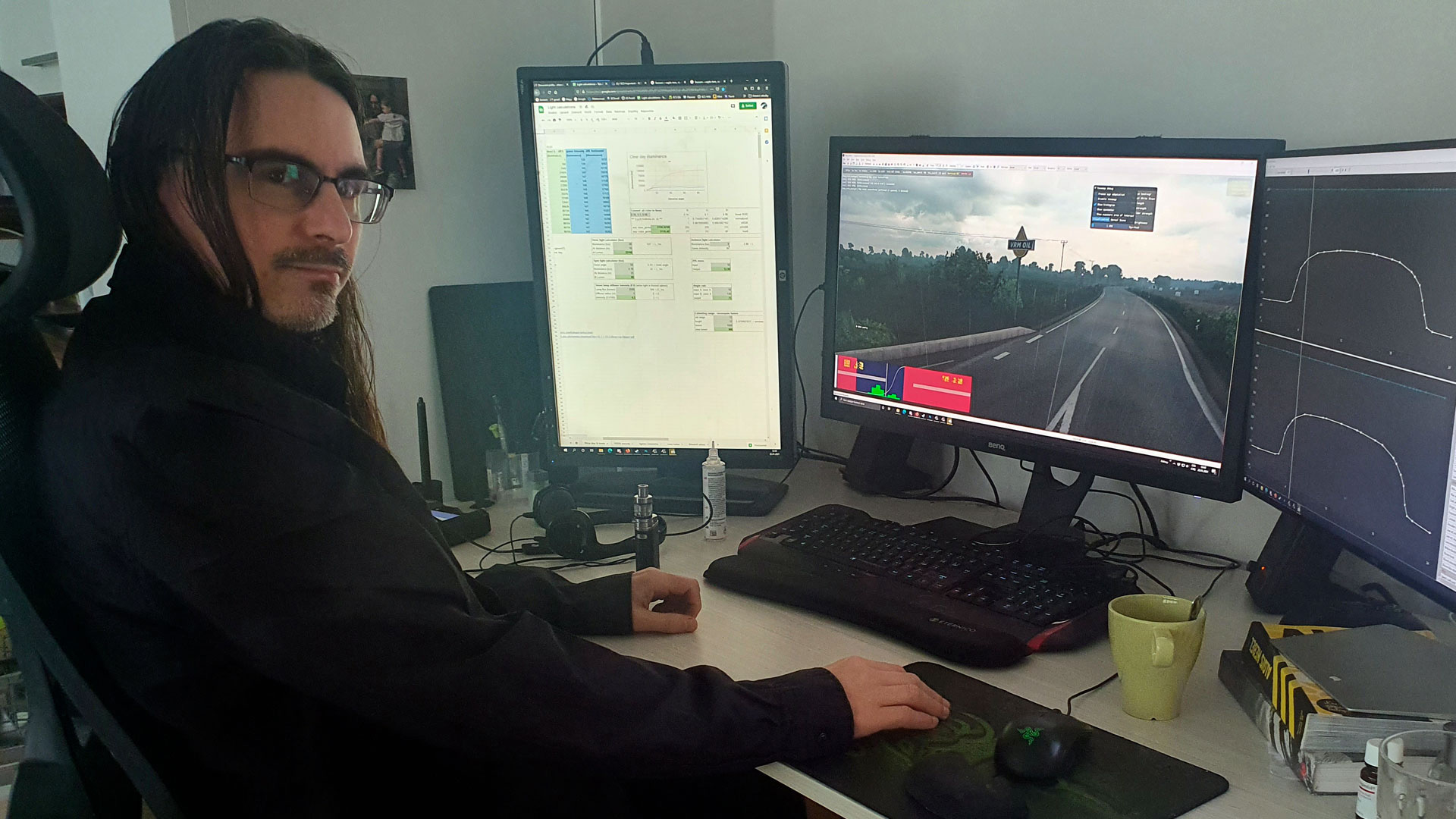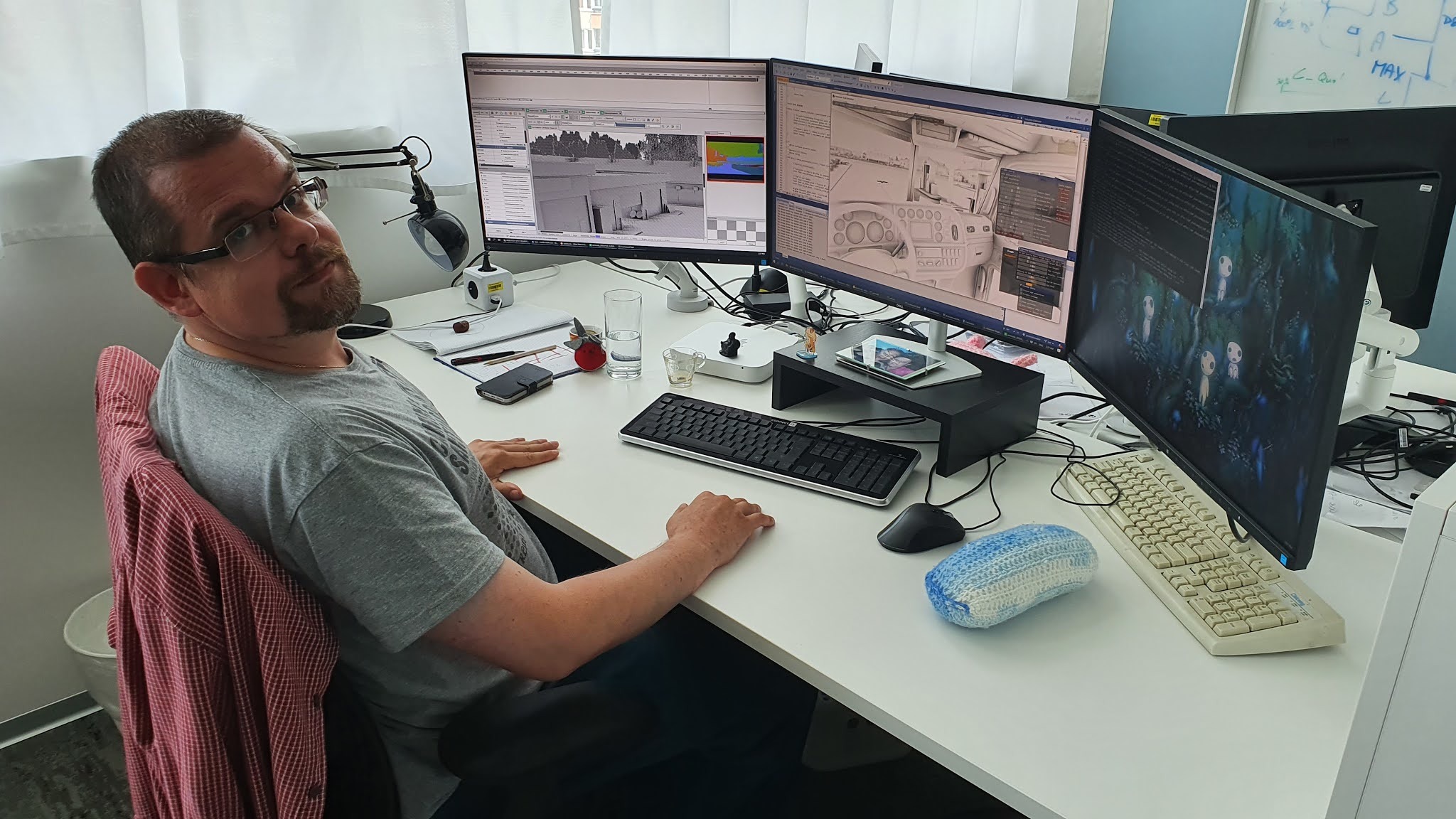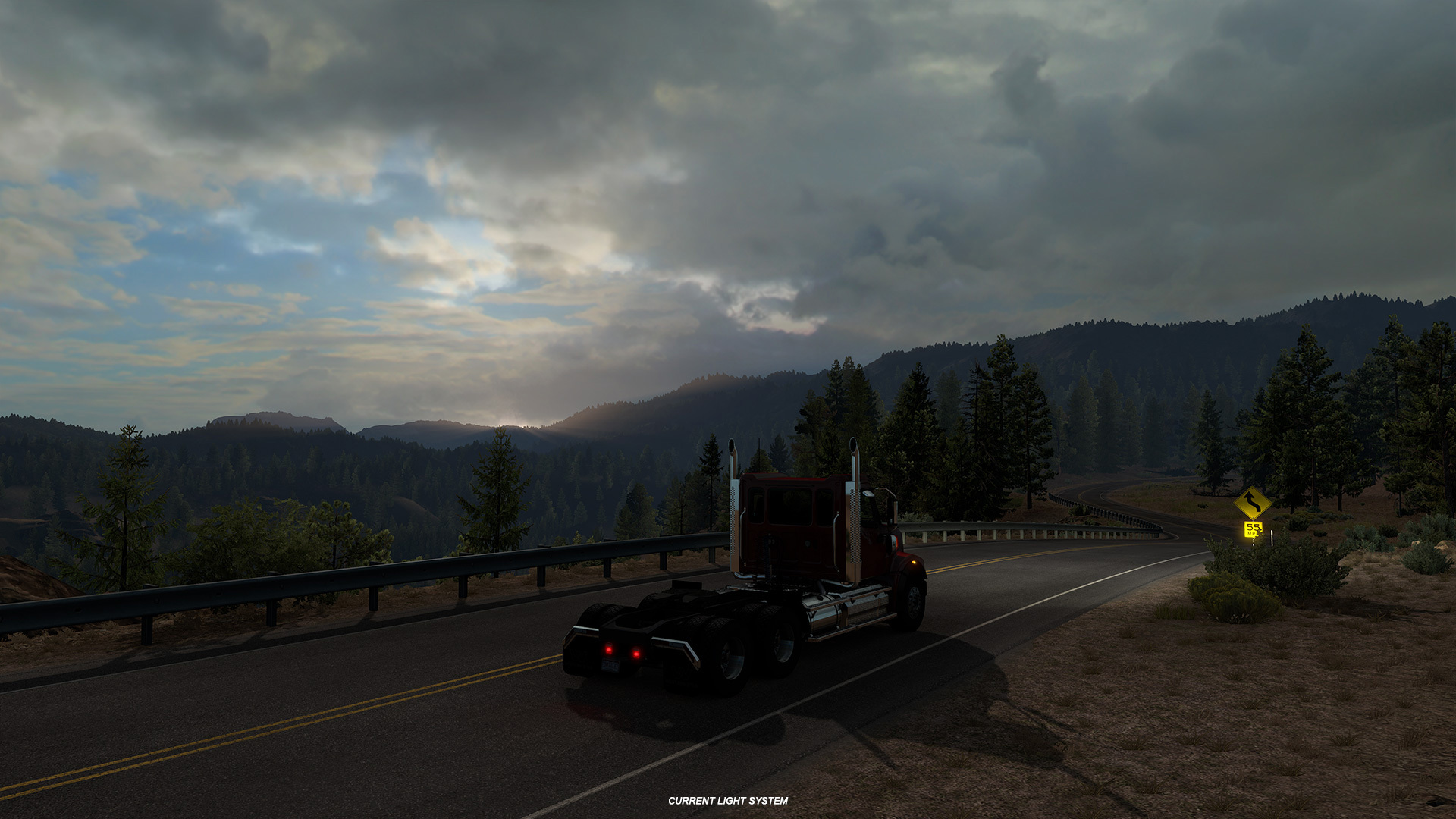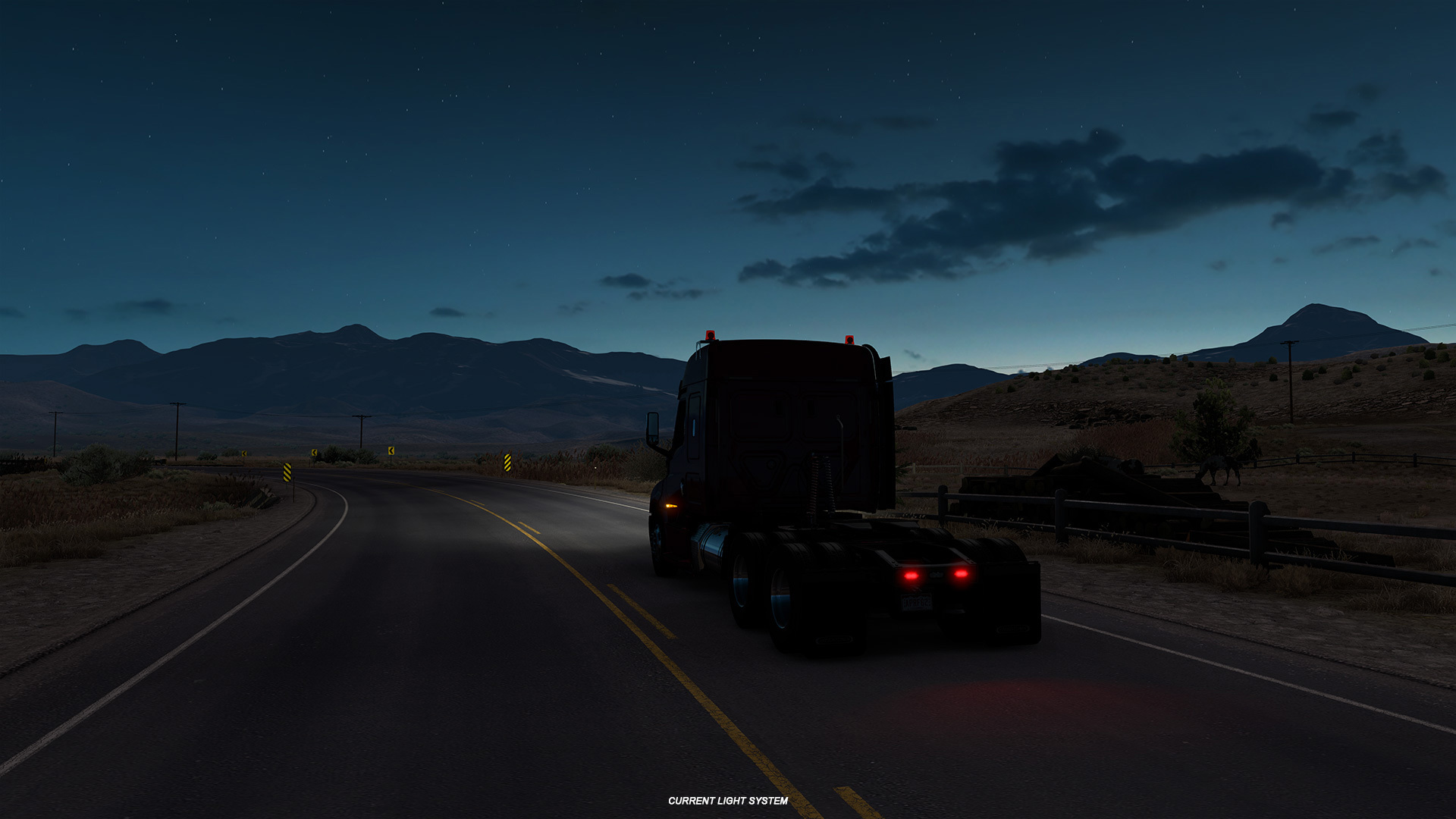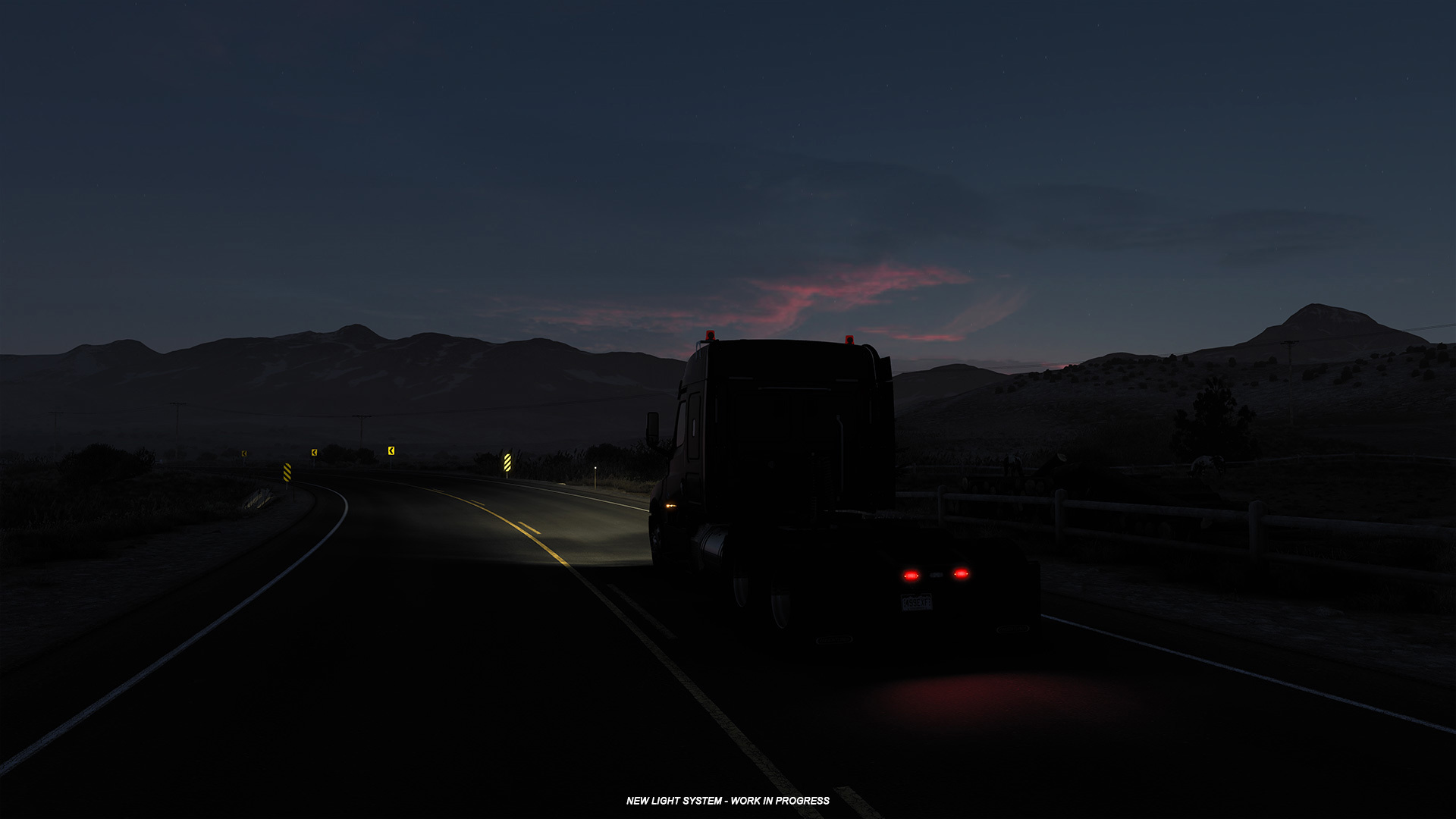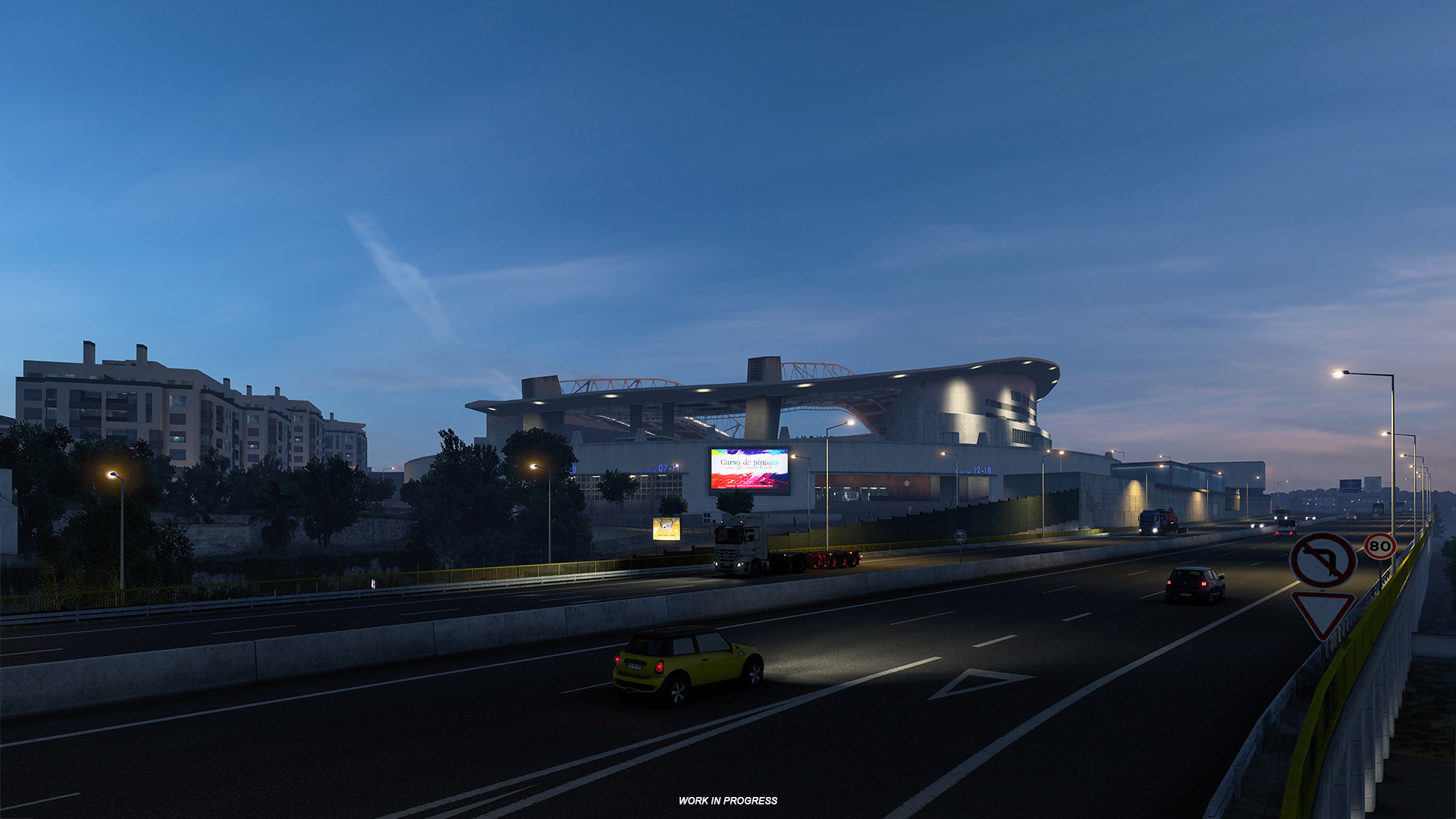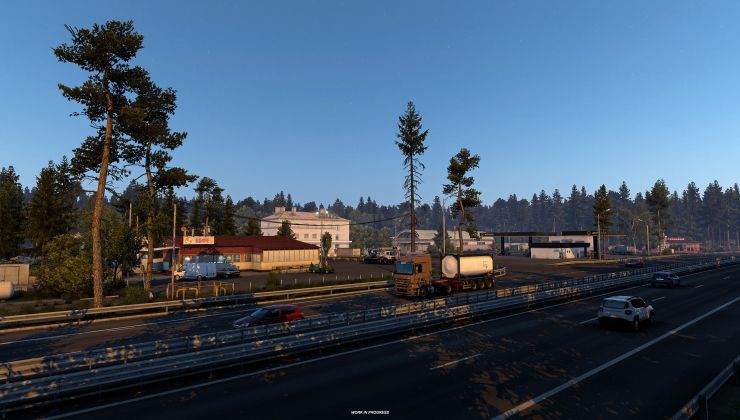Euro Truck Simulator 2: 1.40 Release
Hot on the heels of yesterday's ATS update, we are excited to announce the highly-anticipated arrival of update 1.40 for Euro Truck Simulator 2 as well!

We'd like to thank all those who took part in the 1.40 Open Beta, made bug reports, and provided general feedback on this new version. We hope you can now begin to fully enjoy the various new features which are included within this update. So, what can you expect to find in the 1.40 update for ETS2?
[previewyoutube][/previewyoutube]
Let us give you a quick recap of the most significant changes.
New Visual Lighting System
One of the biggest changes you'll notice when you first hop into your truck cab is the implementation of our new visual lighting system.
[previewyoutube][/previewyoutube]
To prepare for this new lighting system, our teams had to make a lot of changes not only to our graphic renderer, its code, and other functionalities, but also to existing in-game world objects; including a majority of the in-game assets, textures, and materials to better work with the new physical model of the new lighting system. Want to get an in-depth look into what we had to revisit to make this major graphical change happen? Read more about it here.
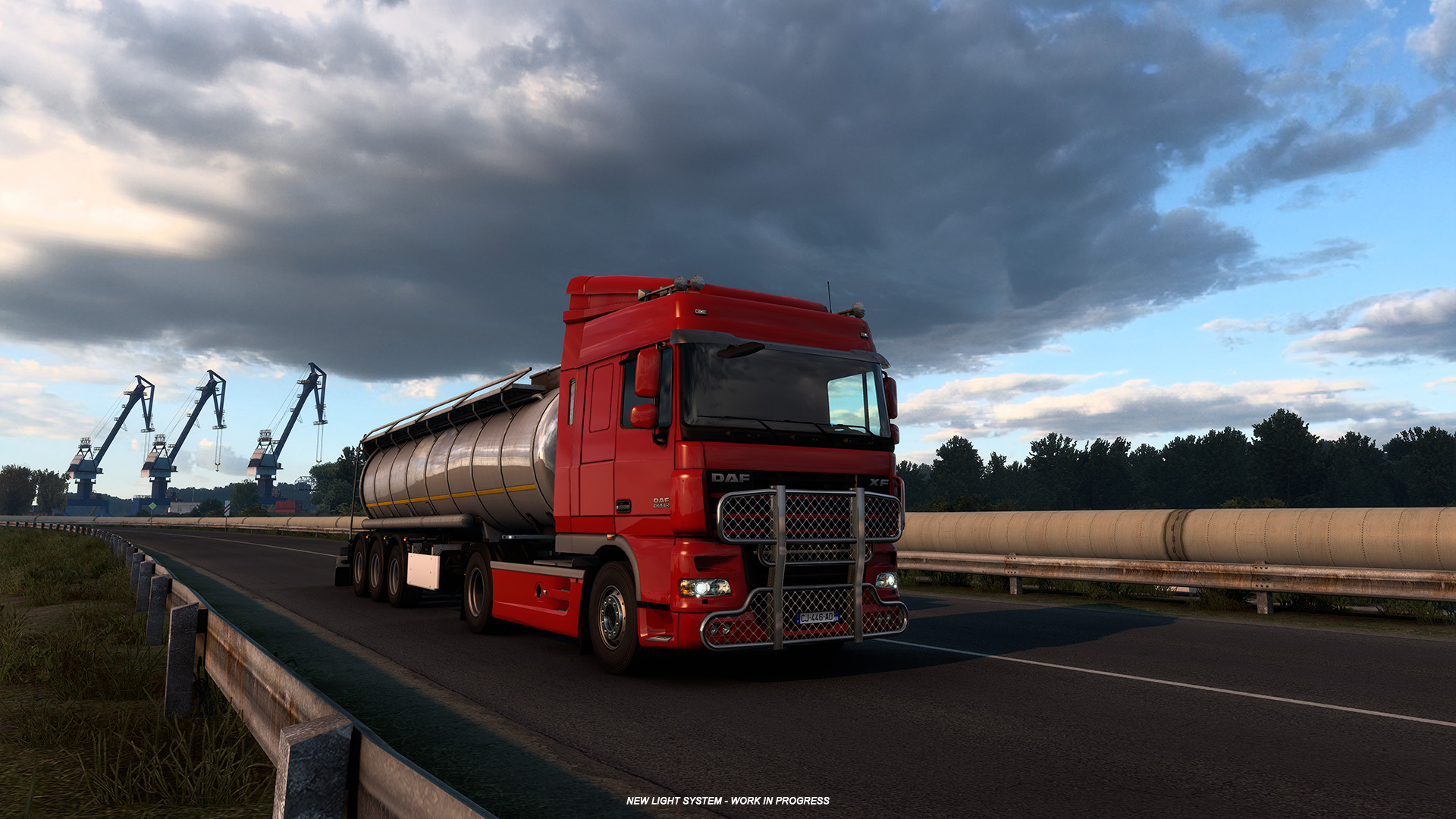
We are very excited for you to be able to experience and immerse yourself in driving in the new light. The result is the culmination of a ton of hours by our programmers and visual effect artists and many other teams involved in the creation process of this new system. And even after this tremendous amount of work already spent in this area we are still not completely done. You can expect further changes and improvements to be done in the future. So while the open beta is done, we are still open and more than happy to get your feedback and opinions about this new graphics upgrade for our games.
Revisiting Germany
1.40 also brings the final phase of our Revisiting Germany project which a small team of mappers has been working on.

For those who are new to our game, the Revisiting Germany project consists of a small dedicated map team, who has been working hard to update one of the oldest map sections of the base game with a more realistic and up-to-date look.

The biggest change that comes with this update is a complete reskin and rework of all the highways and roads in this part of our in-game world, which was not retouched in previous updates.

Additionally, the areas around Dortmund, Köln, Dusseldorf, and Duisburg have not only benefitted from a complete road network redesign but a few new intersections and roads as well! The southern part of the Bundesautobahn 7 is now available in this update.

Vive La France ! New Cities
With the upcoming release of the Iberia expansion for Euro Truck Simulator 2, we know that many drivers will be excited to progressively make their way down Europe to cross into the peninsula for the first time. With France being mainland Europe's gateway to Spain and Portugal, our team has developed 2 new French locations which are a part of a free update to the Vive La France ! DLC coming with 1.40.

The first of these is the city of Bayonne, located in the southwest of France; it is the capital of the French Basque Country and an important connection for drivers heading to Spain as it is located close to the border.
The second location is the smaller commune of Lacq, which is located in the Arrondissement of Pau. While this small village is going to be just a scenic drive-through for most, Lacq is home to the largest refinery in France.

Both of these areas plus two new connecting junctions in Toulouse and Bordeaux come as a free update to the Vive La France ! DLC for Euro Truck Simulator 2, which we originally announced would arrive with the release of Iberia. However, with them being ready now, we thought it would be a nice surprise to include them early in this update.
Super Stripes Paint Jobs Pack Update
Our latest ETS2 DLC is also about to get an update - two of the amazing designs in the Super Stripes Paint Jobs Pack have been expanded and are now applicable on owned trailers! And believe it or not, there was a small social media experiment behind the choice of the two paint jobs that were picked for this upgrade.

Back in November 2020, we wrote several short and seemingly insignificant posts on our Euro Truck Simulator 2 and SCS Software Facebook pages, where we called upon our community to cast votes on which DLC designs you liked the most. Today we are happy to share with you that the two most popular designs are getting an upgrade so that everyone can match these designs on both trucks and trailers!

Your engagement and activity on our social media channels really do matter! We can't wait to see all the beautiful matching combinations on your vehicles. This may be a good opportunity for some VTCs to redesign their virtual corporate identity!
Changelog
Visual
Map
Vehicle

We'd like to thank all those who took part in the 1.40 Open Beta, made bug reports, and provided general feedback on this new version. We hope you can now begin to fully enjoy the various new features which are included within this update. So, what can you expect to find in the 1.40 update for ETS2?
[previewyoutube][/previewyoutube]
Let us give you a quick recap of the most significant changes.
New Visual Lighting System
One of the biggest changes you'll notice when you first hop into your truck cab is the implementation of our new visual lighting system.
[previewyoutube][/previewyoutube]
To prepare for this new lighting system, our teams had to make a lot of changes not only to our graphic renderer, its code, and other functionalities, but also to existing in-game world objects; including a majority of the in-game assets, textures, and materials to better work with the new physical model of the new lighting system. Want to get an in-depth look into what we had to revisit to make this major graphical change happen? Read more about it here.

We are very excited for you to be able to experience and immerse yourself in driving in the new light. The result is the culmination of a ton of hours by our programmers and visual effect artists and many other teams involved in the creation process of this new system. And even after this tremendous amount of work already spent in this area we are still not completely done. You can expect further changes and improvements to be done in the future. So while the open beta is done, we are still open and more than happy to get your feedback and opinions about this new graphics upgrade for our games.
Revisiting Germany
1.40 also brings the final phase of our Revisiting Germany project which a small team of mappers has been working on.

For those who are new to our game, the Revisiting Germany project consists of a small dedicated map team, who has been working hard to update one of the oldest map sections of the base game with a more realistic and up-to-date look.

The biggest change that comes with this update is a complete reskin and rework of all the highways and roads in this part of our in-game world, which was not retouched in previous updates.

Additionally, the areas around Dortmund, Köln, Dusseldorf, and Duisburg have not only benefitted from a complete road network redesign but a few new intersections and roads as well! The southern part of the Bundesautobahn 7 is now available in this update.

Vive La France ! New Cities
With the upcoming release of the Iberia expansion for Euro Truck Simulator 2, we know that many drivers will be excited to progressively make their way down Europe to cross into the peninsula for the first time. With France being mainland Europe's gateway to Spain and Portugal, our team has developed 2 new French locations which are a part of a free update to the Vive La France ! DLC coming with 1.40.

The first of these is the city of Bayonne, located in the southwest of France; it is the capital of the French Basque Country and an important connection for drivers heading to Spain as it is located close to the border.
The second location is the smaller commune of Lacq, which is located in the Arrondissement of Pau. While this small village is going to be just a scenic drive-through for most, Lacq is home to the largest refinery in France.

Both of these areas plus two new connecting junctions in Toulouse and Bordeaux come as a free update to the Vive La France ! DLC for Euro Truck Simulator 2, which we originally announced would arrive with the release of Iberia. However, with them being ready now, we thought it would be a nice surprise to include them early in this update.
Super Stripes Paint Jobs Pack Update
Our latest ETS2 DLC is also about to get an update - two of the amazing designs in the Super Stripes Paint Jobs Pack have been expanded and are now applicable on owned trailers! And believe it or not, there was a small social media experiment behind the choice of the two paint jobs that were picked for this upgrade.

Back in November 2020, we wrote several short and seemingly insignificant posts on our Euro Truck Simulator 2 and SCS Software Facebook pages, where we called upon our community to cast votes on which DLC designs you liked the most. Today we are happy to share with you that the two most popular designs are getting an upgrade so that everyone can match these designs on both trucks and trailers!

Your engagement and activity on our social media channels really do matter! We can't wait to see all the beautiful matching combinations on your vehicles. This may be a good opportunity for some VTCs to redesign their virtual corporate identity!
Changelog
Visual
- New Visual Lighting System
Map
- Germany Reskin
- New French Cities (Vive La France ! DLC)
Vehicle
- Two new paint jobs (from the Super Stripes Paint Jobs Pack) for owned trailers
- UI
- Full-text city/company search in the job selection screen
- Improved vehicle adjustment menu (F4)








